

Valencia Port Guide | 12 Best Things To Do In Valencia
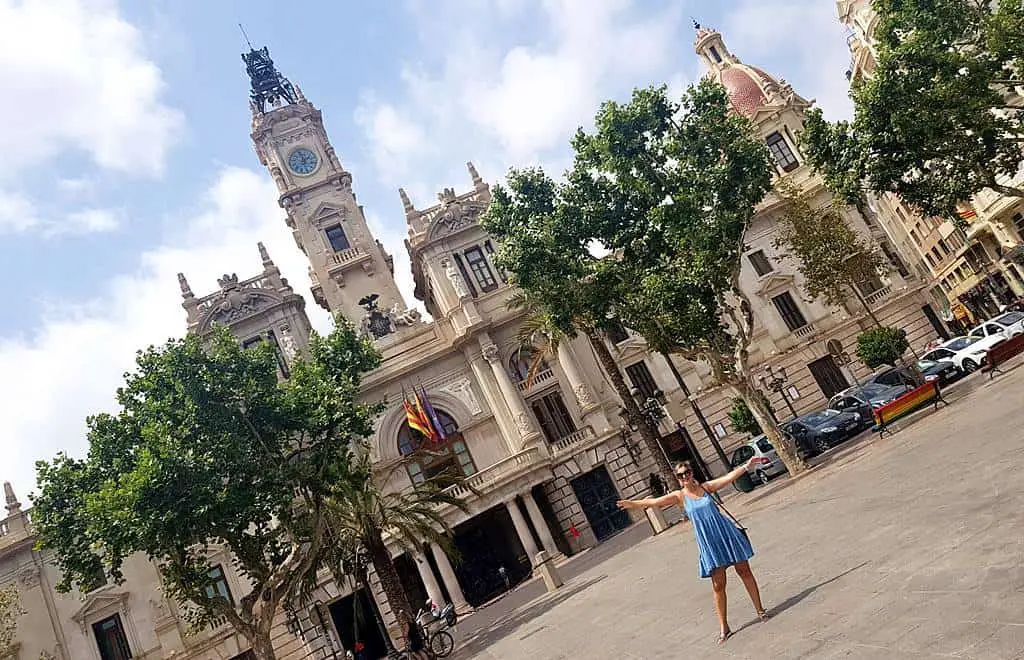
Nestled along the banks of the Turia River, overlooking the Mediterranean Sea, Valencia is one of the major ports in Spain together with Barcelona included in the Western Mediterranean cruise itineraries.
The city is incredibly beautiful and boasts a rich cultural and historical heritage, delicious local cuisine, stunning architecture, and a typical Spanish vibe. In this Valencia cruise travel guide, I share with you:
- Valencia port information (Valencia cruise terminal, getting around the port)
- 12 best things to do in Valencia Spain & Valencia shore excursions
Visit our cruise port guides for Barcelona , Malaga , Alicante , Cartagena , Tenerife , Lanzarote , Palma de Mallorca , Ibiza
Valencia Port Guide
Besides being an important Mediterranean cruise passenger and ferry port, the port of Valencia is Europe’s 5th largest cargo and container seaport.
The port is located in an industrial area, approximately 10 km/6 miles (a 25-minute drive) from the historic city center.
Cruise ships in port usually dock at the Trasmediterránea cruise terminal located on the Poniente Quay (Muelle de Poniente).
This terminal consists of 2 berths (395m and 379m long respectively) located close to the Valencia Passenger Terminal, where cruise passengers have access to a tourist information center, a duty-free shop, a restaurant/cafeteria, souvenir shops, Internet Access, phones, restrooms.
This passenger terminal also provides regular ferry transportation to and from the Balearic Islands.
When this terminal is busy, cruise ships dock at the Port of Valencia’s North Extension which consists of 2 quays 430m and 440m long that can accommodate the world’s largest cruise ships.
There is no terminal building here and shuttle buses are provided to take guests to the main terminal building. On the pier, you will find taxis, tour buses and shuttle buses.
Getting Around Valencia Port
- The currency in Valencia is EURO (€) like in the rest of Spain. Major credit cards are accepted in most places, but always make sure you have some cash for souvenirs and tipping (tipping is not mandatory, though).
- Cruise lines normally provide shuttle buses to the city center for an extra cost. The driving distance from the Valencia port to the city center is approximately 20-30 minutes one way , depending on the traffic. The shuttle bus drop-off/pick-up point is near Valencia’s old town, only a 5-minute walk from the famous Serranos Gate (Torres de Serranos) that marks the entrance to the old town area. Taxis are available at the terminal.
- Valencia Hop on Hop off sightseeing bus tours are available in the city and cover the main city attractions. You can check out the offer on Viator and Get Your Guide
- Shopping in Valencia – The shops and attractions in most parts of Spain, including Valencia, are normally open from 10:00 am to 2:00 pm, and then from 4:30 pm to 8:00 pm. Spanish siesta time is usually 2-3 hours long and takes place in the middle of the day. However, some department stores and shopping centers are open non-stop. Museums and historic landmarks are usually closed on Mondays.
- Valencia has an extensive and reliable public transportation network that consists of buses, trams, and the metro. To get around the city, you can use the public buses operated by EMT or the metro (get the metro map at https://www.metrovalencia.es/ ).
- Valencia central bus station is located at 11, Menéndez Pidal Street, approximately a 15-minute walk from the shuttle bus drop-off point. Check the schedules at https://www.alsa.com/
- If you’re planning to use public transport in Valencia, you can also get a Valencia Tourist Card that offers you unlimited rides and discounts at museums, shops and restaurants. You can purchase it at tourist information offices in the city center, bus stations, airports or online.
- Valencia Airport (Aeropuerto de Valencia), also known as Manises Airport, is located around 17 km/10.5 miles from Valencia port. The driving distance is around 20 minutes.
- Book a private transfer to/from Valencia cruise port
- Check out Valencia rent-a-car deals
- Explore Valencia tours and activities
- Find accommodation in Valencia
12 Best Things to Do in Valencia Port
Valencia is a mixture of old and modern, and if you are coming for the first time, I suggest you take a tour around the city as it boasts marvelous architecture, a beautiful old town and plenty of shops, eateries, and places to explore.
Before I share the best things to do in Valencia, I invite you to grab your copy of the “ Mediterranean Cruise Port Guide” , the most comprehensive guide to 45 Mediterranean cruise ports (including Valencia) , packed with practical information, expert tips & unforgettable experiences! (PDF format/200 pages)

1. The Serranos Towers
The Serranos Towers (Torres de Serranos) are considered to be one of the largest Gothic city gates in Europe.
They were constructed at the end of the 14th century as one of the twelve gates that formed part of the ancient city wall, the Christian Wall of Valencia city.
From its terraces, you can enjoy beautiful views of the city and the Turia River. They overlook the Pont dels Serrans, which is a bridge that you need to cross to get into the Old Town area.
The shuttle bus will drop you off a 5-minute walk from there. The Serranos Gate is closed on Mondays.
Check out Serranos Towers tours and activities
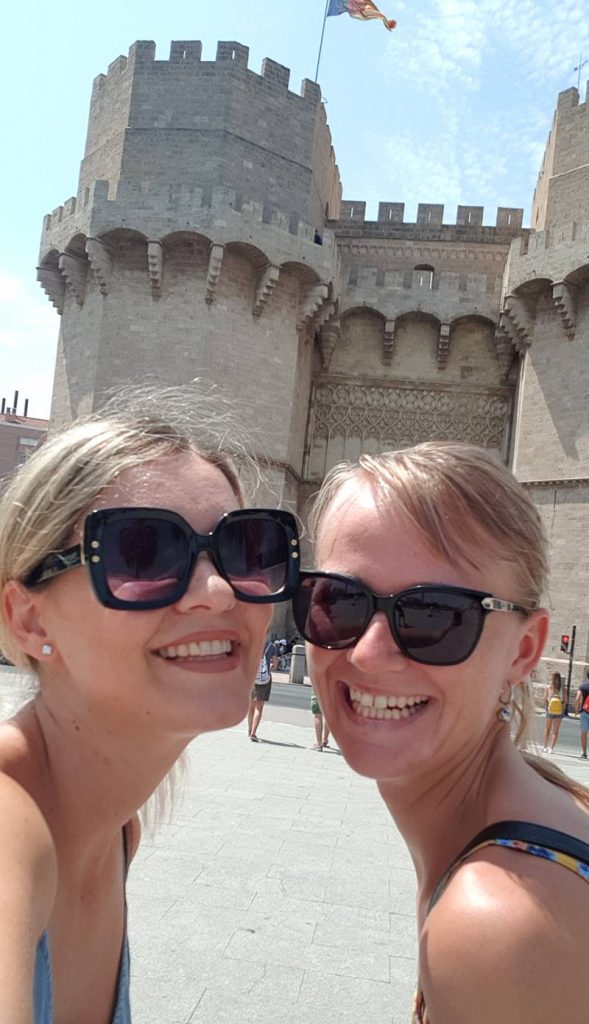
2. Plaza de la Virgen
Only 5 minutes walking distance from The Serrans Towers, you’ll come across this beautiful square which used to be the site of an earlier Roman Forum. The square is also known as Plaça de la Seu and Plaça de la Mare de Déu .
This large pedestrian square is home to the Turia Fountain which represents the Turia River and depicts Neptune, and several outdoor cafes and important historical buildings.
The most emblematic building is the 17th-century Basílica de la Mare de Déu dels Desemparats , a basilica dedicated to the patron saint of Valencia, Our Lady of the Forsaken. The basilica features a blue-tiled dome and an impressive Baroque interior that you can visit free of charge.

Right next to the basilica, you can admire the famous Porta dels Apòstols (Door of the Apostles) of Valencia’s Santa Maria Cathedral (Saint Mary’s Cathedral), known for the impressive carvings of the 12 apostles adorning the entry.
Already from there, visitors can enjoy the view of the iconic El Micalet , the 51-meter tall cathedral bell tower which is today the symbol of Valencia.
Check out Plaza de la Virgen tours and activities
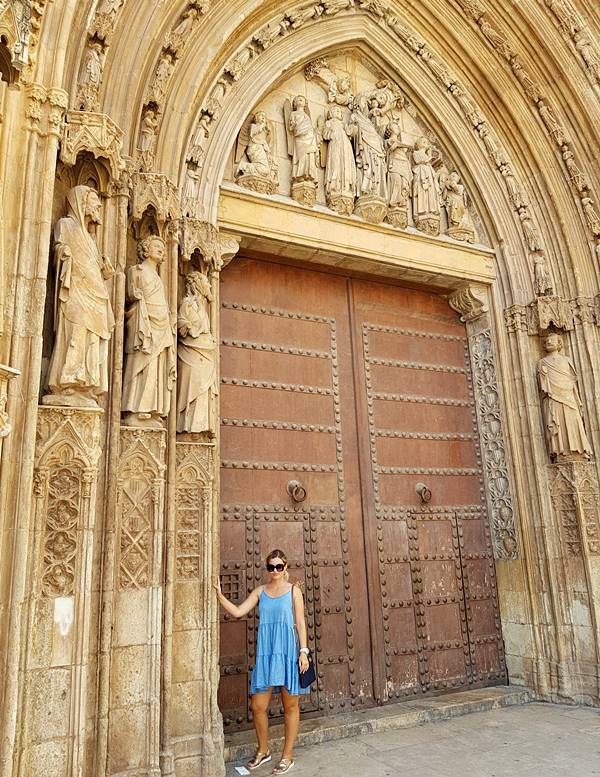
3. Valencia Cathedral
Dedicated to the Assumption of Our Lady of Valencia, this iconic cathedral is also known as Saint Mary’s Cathedral (Santa Maria Cathedral) , La Seu de València (“La Seu” means “the cathedral”), or simply Valencia Cathedral . The cathedral is very large and a part of it is located on Plaza de la Virgen.
The cathedral was built in the 13th century on the site of the former Visigothic cathedral, which had been transformed into a mosque under Moorish rule.
The cathedral features the Gothic architectural style with Romanesque, Renaissance, Baroque and Neoclassical elements, and it boasts numerous 15th-century paintings in its interior.
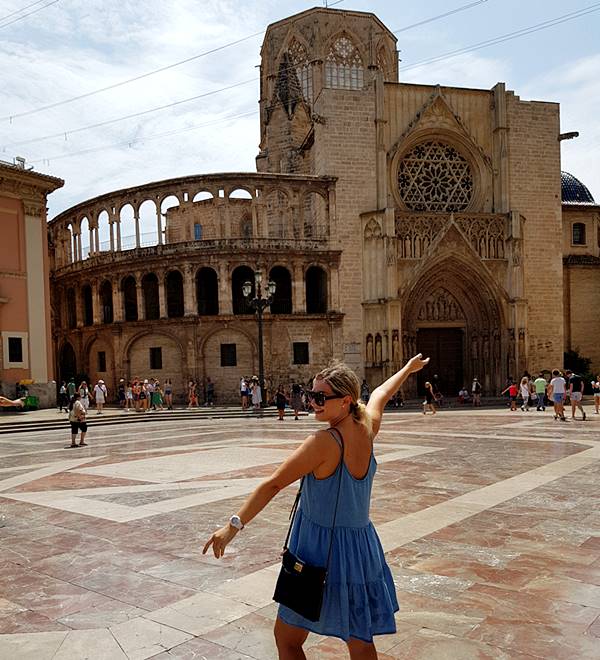
One of the most precious relics is a purported Holy Chalice , believed by many to be the true Holy Grail. It is kept in the Chapel of the Holy Chalice, one of the several cathedral chapels.
The most emblematic landmark of the cathedral is the octagonal El Micalet (El Miguelete) bell tower, built between 1381 and 1424.
The bell tower was originally a free-standing tower and was joined to the cathedral at a later date. El Micalet has 4 floors that you can climb (207 steps in total) and admire the breathtaking views of Valencia’s Old Town.
If you keep walking Carrer del Micalet street from Plaza de la Virgen, you’ll soon reach Plaça de la Reina , another beautiful square from where you can enjoy the most beautiful views of the Cathedral and the bell tower.
Check out Valencia Cathedral tours and activities

4. Plaça de la Reina
This lively square is located less than a 5-minute walk from Plaza de la Virgen and offers the most stunning views of Valencia Cathedral and its iconic bell tower.
The square is bordered by plenty of shops, cafes, bars and restaurants and is partially pedestrian. Its central area is a park where you can find benches and shaded areas.
On the opposite side of the Valencia Cathedral, you can admire the 13th-century Church of Santa Catalina with its 18th-century Baroque tower housing the belfry.
Check out Plaza de la Reina tours and activities
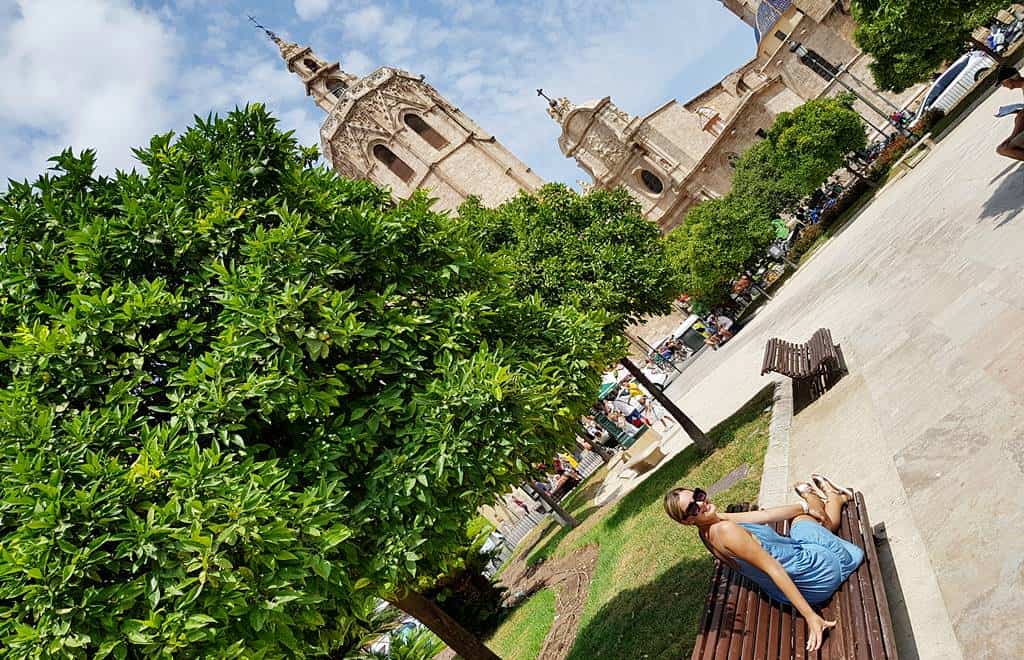
5. Explore the Old Town Streets
Barrio del Carmen and La Seu are two Old Town neighborhoods where the majority of historic landmarks are located.
They are part of the Ciutat Vella district that starts at the medieval Serranos Towers and includes a network of narrow, winding streets filled with shops, restaurants, tapas bars, museums, and other historic landmarks.
Plaza de la Virgen and Plaza de la Reina are part of the old town area, as well as some other squares and landmarks that I am about to list below.
While wandering around its cobbled streets, I suggest you try the delicious local ice cream and sangria or grab a bite at one of the numerous tapas bars.
Keep in mind that the prices may vary depending on where you go (the price of a glass of sangria in front of the Valencia Cathedral and the one in the neighboring streets vary substantially).
Some parts of the old town are cobblestone, so make sure you wear comfortable footwear .
Explore Valencia Old Town tours and activities
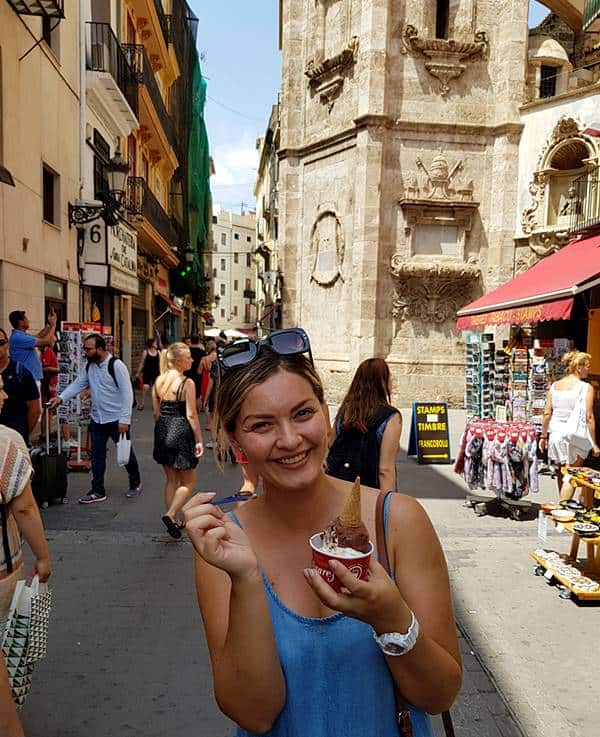
6. Plaza del Ayuntamiento
This magnificent plaza is one of the largest squares in Valencia and is dominated by the imposing building of Valencia Town Hall (Ayuntamiento de Valencia).
Dating from the 18th century, the majestic Town Hall was built in an eclectic style and features an elegant marble staircase, municipal archives, a City History Museum, and an impressive clock tower.
When no official meetings and city councils are going on, the City Hall is open to the public and you can take a guided tour for a small fee.
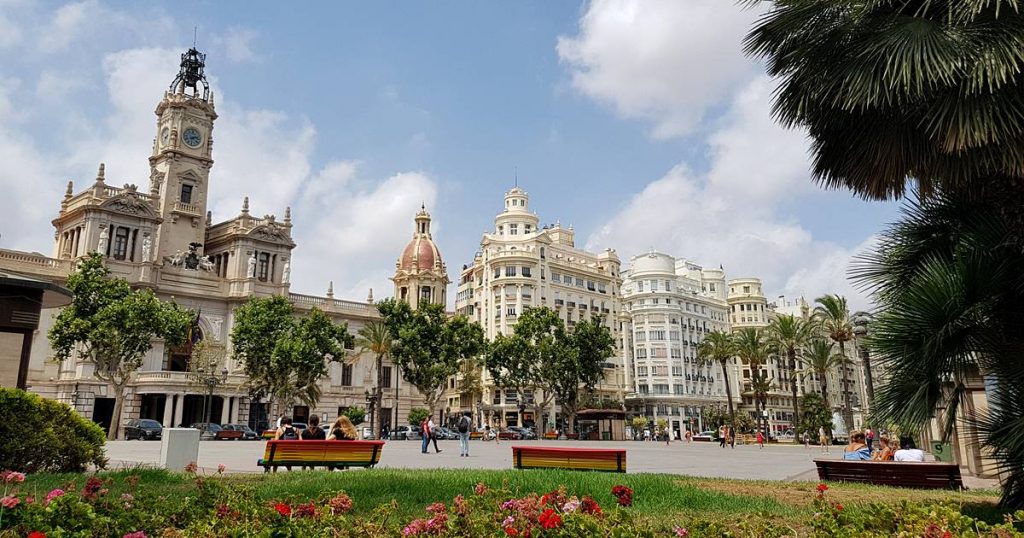
Plaza del Ayuntamiento is partially closed to traffic and very often hosts open markets at weekends. It features a large fountain, green areas, and a couple of other important landmarks, including the Correos – the main post office building.
Here you will find many shops, restaurants and cafes. To get to the Plaza del Ayuntamiento, all you have to do is continue walking Carrer de Sant Vicent Martir street from Plaza de la Reine and in 5 minutes you’ll reach the Town Hall square.
Check out Plaza del Ayuntamiento tours and activities
7. Valencia Bullring
Less than a 5-minute walking distance from the Plaza del Ayuntamiento, you’ll reach Plaza de Toros de Valencia , officially Plaça de bous de València, or Valencia Bullring .
Inspired by Rome’s Colosseum and France’s Arena of Nîmes, Valencia Bullring was built in the 19th century in the Neoclassical style. This massive bullring was used for bullfighting back in the past, and nowadays features a museum and guided tours.
Right across the street is located the imposing building of the North Station (Estación del Norte), the main railway station in Valencia.
Check out Valencia Bullring tours and activities
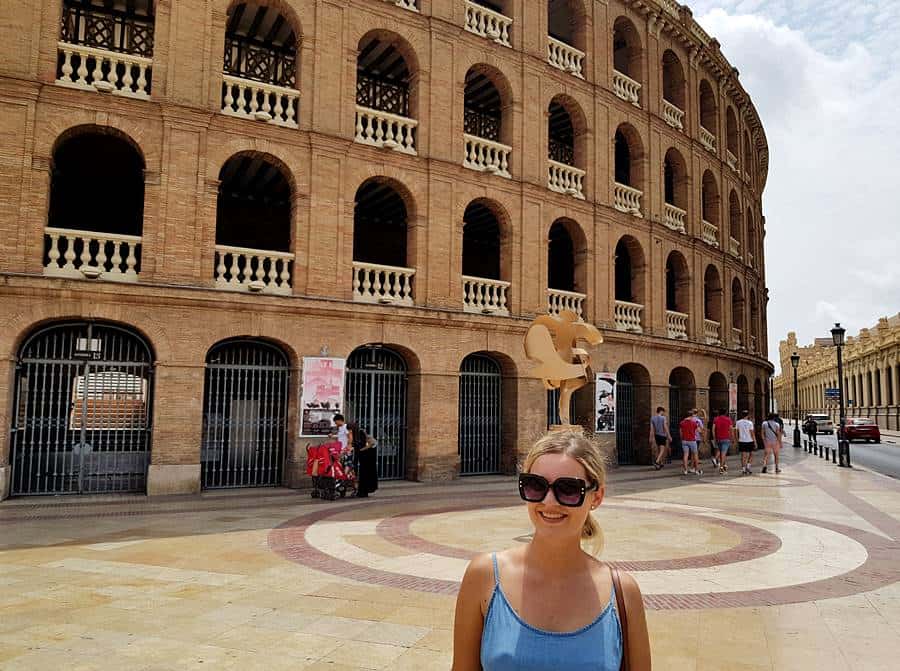
8. Mercado Central
During your visit to the city, the Central Market of Valencia should be at the top of your bucket list. This is the place where you get to feel the unique city vibe and interact with its friendly locals.
Housed in an Art Nouveau building dating from the first half of the 20th century, Mercado Central spreads across more than 8.000 square meters and ranks among the largest markets in Europe.
You’ll find all sorts of products here, from meats, fish, seafood, pastry, fruits, vegetables, cheese and wine selection, to souvenir shops, restaurants, and tapas bars.
Mercado Central is located a 5-minute walk from both Plaza de la Reina and Plaza del Ayuntamiento. It sits across the Llotja de la Seda and the Church of Santos Juanes (San Juan del Mercado).
Check out Mercado Central tours and activities
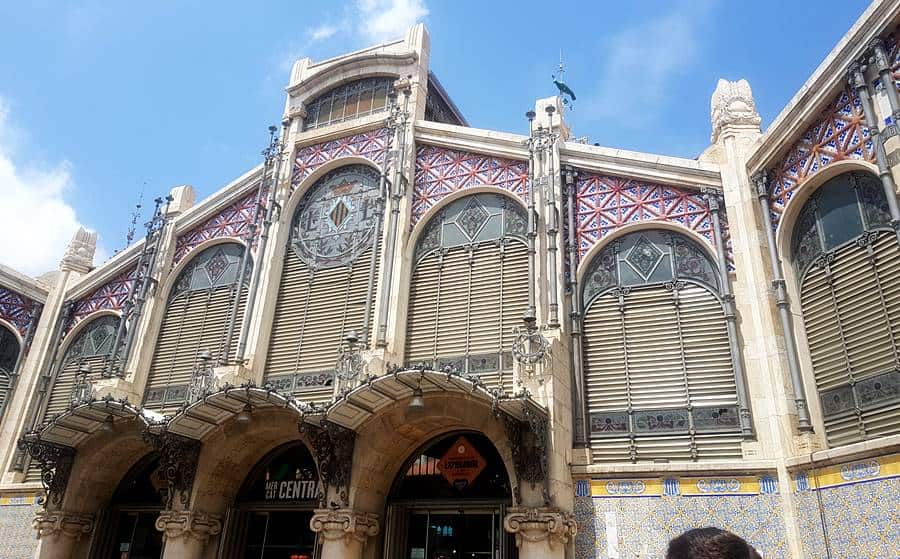
9. La Lonja de la Seda
The Llotja de la Seda (La Lonja de la Seda in Spanish) is a UNESCO World Heritage Site and one of the main Valencia attractions.
The “Silk Exchange” building was built in the 15th century in the late Gothic style and used to be a hub for the city’s silk and commodities traders.
La Lonja de la Seda consists of several halls including the majestic Sala de Contratación (The Contract Hall) whose lavishly decorated space and massive spiral columns illustrate the power and wealth of a major Mediterranean mercantile city in the 15th and 16th centuries.
Check out La Lonja de la Seda tours and activities

10. The City of Arts and Sciences
The City of Arts and Sciences (Ciudad de las Artes y las Ciencias) is a huge cultural and architectural state-of-the-art complex inaugurated in 1998.
The complex is located within a huge landscaped park and consists of several buildings, including:
- The interactive Science Museum (Museu de les Ciències Príncipe Felipe) housed in a massive 3-floor building that resembles the skeleton of a whale;
- The Hemispheric Planetarium (L’Hemisfèric) features an IMAX Cinema, planetarium, and laserium. Also known as the “eye of knowledge”, L’Hemisfèric resembles a giant eye and is the centerpiece of the City of Arts and Sciences.
- The Oceanographic Marine Park Aquarium (L’Oceanogràfic) is the largest oceanographic aquarium in Europe, home to over 45.000 animals from 500 different species, including sea lions, sharks, dolphins, penguins, walruses, beluga whales, and others.
- Palau de Les Arts Reina Sofia is an opera house and performing arts center dedicated to music and the performing arts.
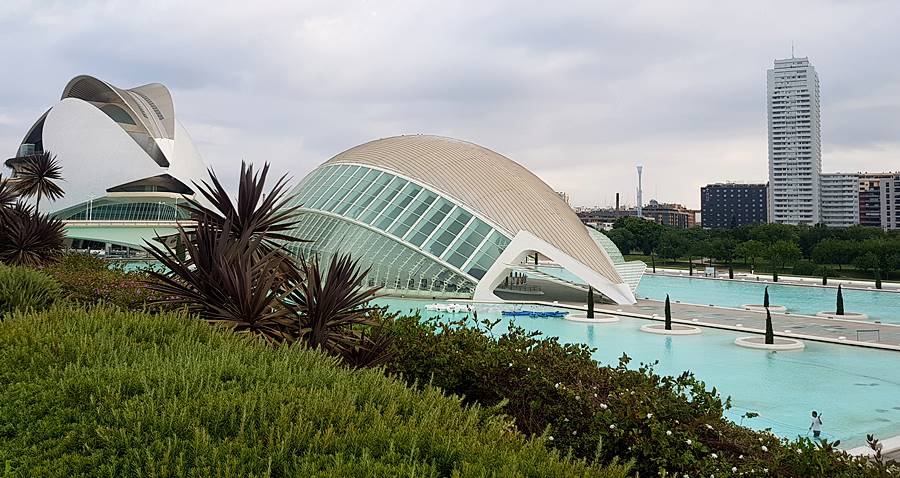
The City of Arts and Sciences is located a 10-15-minute drive from Valencia Old Town, and a little bit less than a 15-minute drive from Valencia port.
The admission prices vary depending on what attractions you want to visit. There are several combined tickets and guided tours offered as well.
Check out the City of Arts and Sciences tours and activities
11. Albufera Nature Reserve
L’Albufera de València is the largest freshwater lagoon in Spain and a wetland featuring a great variety of flora and fauna that you can observe on a guided tour.
Take a boat ride through the lagoon and then head over to the village of El Palmar where you can try the most delicious paella, a Valencian traditional rice dish. History says that paella was invented here in Albufera!
Albufera Nature Reserve is located 24 km/15 miles from the port of Valencia or a 30-minute drive.
Check out Albufera Natural Park tours and activities
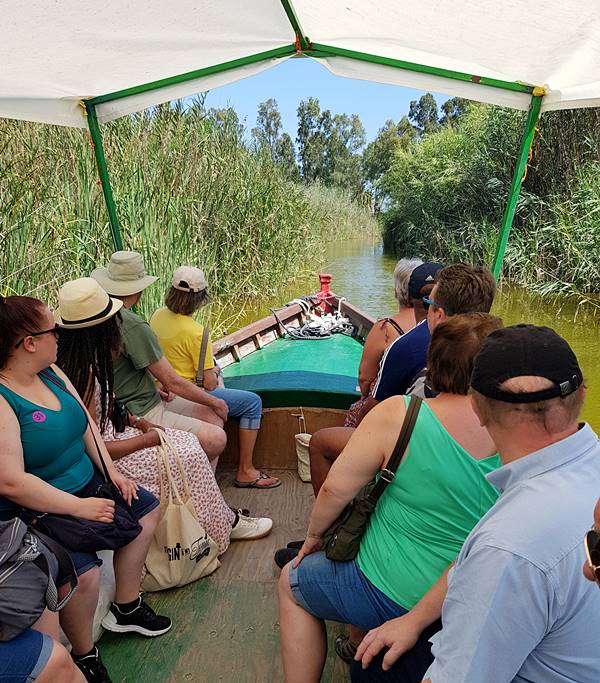
12. Valencia Beaches
Valencia boasts over 20 km of sandy beaches and if you are planning a beach day in Valencia, you’re lucky because some of the most popular beaches are located close to the cruise port.
- Las Arenas Beach (Playa de las Arenas) is situated around a 10-minute drive from Valencia cruise port. It features a vast stretch of fine, golden sand and offers a lot of facilities including chair/umbrella rentals, toilets, a snack bar and water sports. It has a seafront promenade filled with cafes and restaurants, and some of the budget-friendly hotels are located here (check out the Hotels in Valencia section).
- La Malvarossa Beach (Playa de la Malvarossa) is another beach that is connected to Las Arenas beach at the northern end and boasts a wide stretch of golden sands. This beach offers the same amenities as Las Arenas Beach and is popular with locals. Distance from the port: 15 minutes drive
- Pinedo Beach (Playa de Pinedo) is located south of the port of Valencia. It offers great views of the port and is backed by a promenade lined with many restaurants and cafes. Distance from the port: 20 minutes drive
Wrapping Up
Valencia is a bustling city that offers something for everyone, from stunning architecture and rich history to wonderful cuisine, wide public beaches, amazing shopping, and beautiful natural surroundings.
Make sure you plan your day to maximize your stay in Valencia cruise port!
Visit our cruise port guides for Malaga , Tenerife , Lanzarote , Madeira , Rome (Civitavecchia) , Florence (Livorno) , Palermo (Sicily) , Marseille , Gibraltar , Lisbon
You may also like our cruise port guides to the Mediterranean , Caribbean , Western Europe , Baltic & Scandinavia , USA & Canada , Australia & New Zealand
Don’t miss out on the opportunity to enhance your Mediterranean cruise experience with our “ Mediterranean Cruise Port Guide “- your ultimate companion to discovering the region’s hidden treasures and creating unforgettable memories; click below to purchase your copy today and embark on the voyage of a lifetime!
This article may contain affiliate / compensated links. For full information, please see my disclaimer here.
Leave a Comment Cancel Reply
Your email address will not be published. Required fields are marked *

- 🇬🇮 Gibraltar
- 🇲🇪 Montenegro
- 🇵🇹 Portugal
- 🇳🇱 Netherlands
- 🇬🇧 United Kingdom
- Athens (Piraeus), Greece
- Barcelona, Spain
- Ravenna, Italy (from Bologna)
- Ravenna, Italy (from Venice)
- Rome (Civitavecchia), Italy
- Venice (Chioggia), Italy
- Venice (Marghera), Italy
- Amsterdam, Netherlands
- Rotterdam - from Amsterdam Airport/City
- Southampton, UK
- Gluten Free Cruising
- DIY Planning

Valencia Cruise Port Guide: Old Town, Market & Beaches
Situated on Spain’s picturesque eastern cost, Valencia cruise port is about 350 kms (217 miles) south of Barcelona . Popular on Western Mediterranean cruise itineraries, Valencia is also where paella is invented ! In this DIY port guide, I’ll take you through how to get from Valencia cruise port to city centre , the top things to see & do once you get there and of course, I’ll include how to get to nearby Valencia beaches , so you can enjoy some Mediterranean sun! Most importantly though, I’ll share where to eat some authentic paella in Old Town and how you can also learn to cook an authentic paella while in Valencia!
On This Page
- Valencia Cruise Port: Is a DIY Excursion Easy? 😎😎😎😎 (Straightforward)
Valencia Spain Cruise Port Essentials: What You Need to Know
Valencia cruise port map, valencia cruise port to city centre (old town).
- 1. Valencia Cathedral
- 2. Silk Exchange (La Lonja de la Seda)
3. Mercado Central
4. barrio del carmen, how to get from valencia cruise port to the city of arts and sciences (cac), how to get from old town to the city of arts and sciences (cac), how to get from valencia cruise port to la malvarrosa beach, how to get from valencia cruise port to albufera national park, valencia: the story behind paella, paella served in valencia today, valencia: where to eat paella, valencia: learn to cook authentic paella, valencia cruise port: is a diy excursion easy 😎😎😎😎 (straightforward).
While Valencia cruise port seems quite far away from both the Old Town and the futuristic architecture at the Centre of Arts and Sciences (Ciudad de las Artes y las Ciencias), a DIY shore excursion is relatively straightforward 😎😎😎😎. Here’s why:
- Buses to Old Town : From Valencia cruise terminal, you’re a few minutes’ walk from public buses which will take you directly to Old Town. Buses to the Centre of Arts and Sciences, where the giant aquarium is, is also nearby
- Walkable Old Town: Valencia’s Old Town is easily walkable. Europe’s largest fresh produce market is there, so there’s loads of spots to fuel up and take a break.
- Tram to Beaches Or Just Walk: Closest beach is actually walkable from the cruise terminal. If you’d like to visit the famous La Malvarrosa beach, then trams are nearby too.
- Valencia Cruise Port Schedule: Check port call schedules here
- Valencia Cruise Port Address : Marina de Valencia Modulo Sur F1, 46024 Valencia, Spain – see this marked on my Valencia Cruise Port Map below 👇 Note: Larger cruise ships will typically dock on the outer piers. If your cruise ship docks in the outer piers, the port will provide a shuttle bus, so you’ll be dropped off at the terminal.
- Currency: Euros
- Language : Spanish & Catalan
- Official Tourism Website: Visit Valencia
- Transport App : I used Citymapper to navigate metro, trams and bus routes across the city. It also gave me good walking directions. I also tested Google Maps and it worked well, too.
- eSIM for roaming in Spain : For a great data connection without the huge roaming fees, use an eSim data pack from Airalo. I always recommend having a smartphone with a valid plan when you’re at port touring independently. Get US$3 off your first eSIM data pack from Airalo when you use ROXANN1666 when you sign up or apply it at checkout
- On Desktop | Laptop? Use buttons on bottom left to zoom in/out. Click on the upper right hand corner to see a bigger version.
- On Tablet | Mobile? Pinch your screen to zoom in/out and use two fingers to move map around. If you have Google Maps installed on your tablet/mobile, my map will open in your Google Maps app if you click on the upper right hand corner.
- If map is not loading correctly, click here to see it directly on Google Maps .
- Locate the Cruise Port Shuttle: Take the port shuttle bus to the cruise terminal – the main Trasmed building ( Link to Google Maps )
- Frequency: Bus #4 typically runs every 10-15 minutes during day time on weekdays.
- Live Departure Times: Check on Citymapper with live bus times here .
- Bus Direction : If you see signs, you’re looking for Bus #4 heading towards “Plaça de l’Ajuntament”
- Pay for Ticket with Contactless: Buses accept contactless cards (Visa / Mastercard). A single journey is €1.50. Note cash is not accepted on buses. The bus journey will take 20-30 minutes depending on traffic.
- Hop Off at Town Hall Square: For the historic Old Town, Central Market, La Lonja, alight at “Plaça de l’Ajuntament” (Town Hall Square) – this is the last stop on this route.
Note: Your cruise line may have paid or complimentary shuttles from the ship directly to either Old Town or the City for Arts and Sciences (CAC) area, without stopping at the cruise terminal altogether. So be sure to hop on to the right shuttle, depending on where you’d like to go. Note that the Old Town and CAC area are quite far apart and it’s difficult to walk from one to the other.
Valencia Shore Excursion: Top Sights & Experiences from the Cruise Port
Ready for your DIY Valencia shore excursion? This guide highlights the best things to see and do in Valencia, within easy reach of your cruise port. For a DIY port day in Valencia, I would recommend taking the bus into Old Town. If you have time, energy or both, the stunning architecture at Centre of Arts and Sciences (Ciudad de las Artes y las Ciencias) is really worth seeing.
1. Valencia Cathedral (Catedral de Valencia)

Dating back to the 13th century, Valencia Cathedral was built on an ancient Roman template that was later a mosque. Today, Valencia Cathedral is most famous for the Holy Chalice and is purported to be the Holy Grail , the cup used by Jesus during the Last Supper. The cup is on display at the Chapel of the Holy Chalice.
The cup itself is plain, without decoration and dates back to the 1st century. The base (an inverted cup) and handles with pearls and precious stones dates back to the 11th century, when it was supposedly added to protect the Holy Grail.
- How to get there: Follow instructions above to get to Old Town by bus and alight at “ Plaça de l’Ajuntament ” stop. From there, the Cathedral is 5-7 minutes walk on flat ground.
- Opening Hours: 10:30am – 6:30pm Monday – Friday, 10:30 – 5:30pm Saturday, 2pm – 5:30pm Sunday. Double-check opening hours on cathedral’s website .
- Tickets: €9 for adults, €6 for kids, students and seniors. Free for kids under 8. Includes an excellent audio guide. I followed the audio guide and the visit took about an hour.
- Facilities: WCs are in the museum portion of the cathedral.
If you want to climb the bell tower (the “ El Miguelete “), it’s 207 steps up a spiral staircase to the top! But it will give you incomparable views of Valencia’s Old Town. The bell tower is in an octagonal shape, which is also unusual. The Bell Tower has different opening hours:
- Bell Tower Opening Hours: 10am to 6:45pm daily.
- Tickets: €2.50 for adults, €1.50 for kids, students and seniors. Kids under 8 are free. You can purchase the Bell Tower ticket on its own.
2. Silk Exchange ( La Lonja de la Seda )

A few minutes walk from the Cathedral is the Silk Exchange. A UNESCO World Heritage site, the Silk Exchange is a late Gothic building originally used for trading silk. Built in the 15th century, the main hall, known as the Contract Hall, features a vaulted ceiling adorned with elaborate ribbed arches and carvings.
The attraction itself is rather small with a nice garden patio and a few rooms to explore beside the main hall. Don’t miss the 12-min video playing on a loop next to the main hall.
- Opening Hours: 10am to 7pm Monday to Saturday. 10am to 2pm Sunday. Check opening hours here .
- Tickets: €2 adults, €1 for students & seniors. Free for kids.

Mercado Central, the central market, is the largest fresh produce market in Europe . For foodies, this is definitely worth a visit.
There’s more than 1,200 stalls with plenty of options if you want to taste the food. I saw many stalls selling samplers of different kinds of cheese, ham, olives etc. Wine stalls were selling tasting glasses. There are also sit down bars where you can have tapas and sandwiches. Head there early, as the market will close by 3pm. As with most shops frequented by locals, it is closed on Sundays.
- Opening Hours: 7:30am to 3pm Monday – Saturday. Closed Sundays.
- Stores Map: Click here for the stores map but it’s just easiest to walk around. Most stores with ready-to-eat goodies are on the outer edges of the market.
Alternatively, join an Old Town walking tour here , followed by a sit down tapas lunch at Barrio del Carmen – the most colourful and lively district in Valencia.

Barrio del Carmen is a historic neighbourhood located within the city’s Old Town. You’ll find narrow cobblestone streets, colourful buildings adorned with street art, trendy bars, cafes, boutiques and art galleries.
Barrio del Carmen is also known for its nightlife, though most cruise passengers would have long gone by the time the bars start to open. I had a wonderful time browsing the street art. Just keep walking north from the Silk Exchange or the Central Market and you’ll get to the district.
5. City of Arts and Sciences (Ciudad de las Artes y las Ciencias)

The City of Arts and Sciences (CAC) is situated at the southeast end of the former riverbed of the river Turia, which was drained and re-routed after a catastrophic flood in 1957.
Many sci-fi films and TV shows have used the CAC as a backdrop, with the most famous recent example being the HBO TV series Westworld . If you’ve watched the show, you’ll instantly recognise the CAC as the Delos headquarters . Re-live the show and zip around the CAC in your own Segway !
The complex consists of the Museu de les Ciències (a science museum), the Oceanogràfic (an Aquarium), the Palau de les Arts Reina Sofía (an opera house) and the Hemisfèric (an IMAX cinema and planetarium).
If you’re traveling with kids, then the most kids-friendly activity in the CAC is the Oceanogràfic – it’s the second largest Aquarium in Europe and I spent 3 hours there. All the usual favourites are there including dolphins, penguins and sea lions. Beluga whale Kylu was born in the aquarium. Pre-booking is a must during summer months , as the aquarium is very popular with locals.
On the other hand, the Museu de les Ciències is not kids-friendly, at least not to English speaking kids. All information is either in Spanish and/or Catalan. For some exhibits, an online English guide is accessible via QR code but I gave up shortly after. It wasn’t user friendly and I spent more time staring into my phone than the exhibit.
- Frequency: Bus #95 typically runs every 10-15 minutes during day time on weekdays.
- Live Departure Times: Check on Citymapper with live bus times here
- Journey Time: The bus journey should take about 15 mins.
- Bus Direction : If you see signs, you’re looking for Bus #95 heading towards “ Hospital General “
- Pick your stop! For the aquarium, get off at the stop called “Oceanogràfic”. The complex is huge, so for the science Museum, alight at the next stop called “Museu de les Ciències” and for the Hemisfèric or the Palau de les Arts, get off at the following stop called “Les Arts”.
Once you’ve visited the complex, head north and take a break at the Turia Gardens . Alternatively, there are two big malls and the famous Spanish department store El Corte Ingles has a big store close by too.
If you’ve just finished visiting the attractions in Valencia Old Town and want to stop by the CAC before heading back to the cruise port, then walk north from the Cathedral or Barrio del Carmen until you get to the main road across from the Turia Gardens.
- Old Town to CAC: Bus stop “ Blanqueria – Pare d’ Òrfens ” or “ Torres dels Serrans ” are where Bus route #95 stops. It takes about 10 mins and will stop at either “Le Arts” or “Ciutat de la Justicia” for the CAC.
- CAC to Cruise Port: This same #95 will also take you back to the port. So once you’ve finished sightseeing at the CAC, find the same bus stop and it will take you back to the cruise port.
6. Valencia Beaches

There’s 20 kms (12.5 miles) of glorious beaches in Valencia. So if you fancy a beach day on your Mediterranean cruise, then Valencia may just have what you’re looking for! The most famous beach is La Malvarrosa. There are loads of kiosks, cafes and restaurants for refreshments, as well as sunshades and deck chairs for hire.
- Walk to Tram Stop: Once you’re outside the cruise terminal, walk around the bay for 10-15 minutes to a tram stop called “ Grau – La Marina “. The walk is 1km (0.6 mile) on flat ground. Catch tram #6 (Direction: Tossal Del Rei) to stop La Cadena.
- Tickets: For trams, you’ll need to purchase AND validate your ticket before boarding the tram. (Strangely enough, there are no ticket validators on the trams themselves.) You’ll find ticket machines at each stop, with euro coins & notes accepted, as well as cards, including contactless.
- Once you get off the tram, you should be able to see the beach.
Alternatively, the closest beach Playa de las Arenas is about 20-25 minutes walk on flat ground from the cruise terminal. A walk from the cruise terminal to La Malvarrosa will take 30-35 minutes.
7. Albufera National Park
The Albufera is the largest freshwater lagoon in Spain. The wetlands attract a lot of birdwatchers but most tourists these day come here for two things: to see where the paella was born and to ride in the traditional flat bottom boats, with pointed ends called “albuferencs”.
These boats are designed to navigate the shallow waters of the lagoon and were traditionally used for fishing. Boat trips are generally about 30-45 minutes and will serve you paella with a drink.
Albufera National Park is only 10kms (6 miles) from the city. So despite it being a little off the beaten track, I’ve included it as a potential half day excursion idea for those who might want a DIY excursion there. (It did take me half a day!) If you’re not keen on a boat trip, El Palmar are full of restaurants serving the most amazing paella .
Do check the weather forecast before hopping on the bus here! I arrived on a particularly windy day and I definitely did not like the idea of being on a flat bottom boat, potentially be blown away!
- Terminal to Bus Stop: Follow instructions above to walk to bus stop “” Manuel Soto Enginyer – Comandiancia Marina “. Tale Bus #95 to stop “ Museu de les Ciències “.
- Interchange at CAC: Then cross to the bus stop on the opposite side of the road and catch Bus #24 to get to El Palmar to see a traditional fishing villages with lots of paella restaurants.
- Boat Trips: Alternatively, both Bus #24 and #25 will get you to “ Embarcador de L’Albufera ” for boat trips. From this stop, you can also walk to the beach on the opposite side of the lagoon.
- Journey Time : Bus journey takes about an hour each way, so make sure that you factor sufficient time to get back to the port.
- What to See: Besides the boat ride and eating paella, there’s a lagoon, birth watching hides, walking trails as well as some nice beaches in the National Park. But it’s not that easy to go from one thing to another without hopping on a bus or walking long distances, as the National Park is massive. So decide what you want to see & do first.
Note: I would highly recommend that you only do this DIY excursion if you have access to a smartphone and a working data connection. I did this DIY excursion on a weekday and buses during the day can sometimes be up to 30-60 minutes apart depending on traffic. So having access to real-time bus departure departure / arrival times were extremely helpful.
As I alluded to in my intro, paella was invented in Valencia ! The iconic dish has its roots in the humble origins of peasant and farmer cooking. Originally it was served as a lunchtime meal for workers in the field. They would bring a large pan (the “paella”), rice and whatever ingredients were available to cook over an open fire.
The foundation of paella was rice, because it was the staple crop of Valencia. Vegetables like tomatoes, onions and beans, along with snails or whatever was found in the fields were added. For special occasions, they might include rabbit, duck or chicken. Over time, as Valencia grew more prosperous, the recipe evolved. Saffron, a prized spice, was then added for its distinctive colour and flavour. Seafood paella also emerged, particularly in coastal areas where fishermen had access to fresh catches.
(I learnt all this about paella at the Valencian Museum of Ethnology aka L’ETNO, which is an excellent museum with an awesome permanent exhibit on paella!)
Today, the authentic Valencia paella is still cooked over an open fire in a wide, shallow paella pan, allowing the Bomba rice to cook evenly and develop a slightly crispy bottom layer called “ socarrat “.
Seafood, vegetarian & vegan versions are widely available in Valencia but if you see “Valencian paella” marked on the menu, note that the meat is typically a mix of rabbit and chicken . So if you want to avoid rabbit meat, don’t order “Valencian paella” or check with your waiter before ordering. Green beans and large white beans are often also added as well.
If you’re gluten free , there’s no gluten in a traditional paella recipe but cross-contamination is always possible, depending on what else the restaurant serves. Your best options are to eat paella in a restaurant where the paella is cooked in a small paella pan for two people, as opposed to those restaurants or stalls in Mercado Central with a massive pan and you buy a “single serving” of paella.
Here’s a few places to eat paella in Old Town – see this marked on my Valencia Cruise Port Map above . Allow 30 minutes to 45 minutes for your paella to be freshly cooked!
- Puerta Del Mar: Wide range of paellas, from seafood, lobster, vegan and traditional Valencian style (with rabbit). Around €20 per person with a minimum two-person portion per order. Restaurant has an English menu.
- Navarro: Similarly large range of paellas, from seafood, lobster, Valencian and black rice versions. Around €25 per person with a minimum two-person portion per order. English menu available.
- Masusa Paella Bar : Slightly out of the way but this paella bar allows orders for one person. Whether you’re traveling alone or your travel companion doesn’t eat meat or seafood, then it’s a great place to order your own paella! Around €15-€20 per person. Also has some great tapas dishes on the menu.
- Gran Mercat : No frills casual tapas bar serving paellas as well. Two person portion minimum. Around €20 per person for paella. Very close to Mercado Central, so good location if you want to visit the market but also like to have a sit-down paella lunch.
- Arrocería Ricepaella : Busy port day and need lunch on the run? Then you can get portions of paella for takeaway here. There’s also some tables to eat there. Around €8-10 per person. Note that the paella is already cooked in large pans! It’s fast food paella!
I absolutely love paella! I don’t claim to cook it authentically at home with a proper paella pan but the basic recipe can be cooked easily on stovetop. If you fancy taking a few hours on your port day to cook your own paella, enjoy some tapas, with a chef accompanied market tour to buy ingredients, Valencia is the place to do it!
Featured Image with thanks to Luca from Pixabay
Happy cruising and hope you’ll have a most wonderful day at port in Valencia! I’ve spent a few days in total in Valencia and it’s a wonderful city with lots of history, culture, nature and of course, paella! If this guide has been helpful to you, please do share it. Sharing buttons are on the side. Drop me a comment below if you have any questions!
Leave a Comment Cancel Reply
Your email address will not be published. Required fields are marked *
Save my name, email, and website in this browser for the next time I comment.
Related Posts

Naples Cruise Port: Piazzas, Palaces & Pizzas Await!

Sibenik to Krka National Park: DIY Guide to Krka Waterfalls

Split to Trogir Day Trip: UNESCO Journey Through Time

Korcula Croatia Guide: Old Town Charm & Adriatic Beauty

Villefranche-sur-Mer Guide: Old Town & Beach Bliss

Sibenik Card: Is It Worth It for Your Cruise DIY Excursion?
Winter is here! Check out the winter wonderlands at these 5 amazing winter destinations in Montana
- Travel Destinations
Valencia Port Guide For Cruisers, Spain
Published: August 29, 2023
Modified: December 27, 2023
by Rae Slusher
- Travel Essentials & Accessories
- Travel Guide
- Travel Tips
Introduction
Welcome to Valencia, a vibrant city located on the southeastern coast of Spain. With its rich history, stunning architecture, and vibrant culture, Valencia has become a popular destination for cruise travelers. The beautiful Valencia Port serves as the gateway to this captivating city, offering a plethora of attractions and experiences for visitors to enjoy.
As you dock at Valencia Port, you will be greeted by a picturesque waterfront lined with palm trees and charming promenades. This bustling port is not only a hub for cruise ships, but it is also a thriving commercial port, showcasing the city’s maritime heritage.
Valencia Port is strategically located, making it easily accessible for cruisers. It is well-connected to major transportation networks, allowing for convenient onward travel to other parts of the city and beyond. Whether you’re interested in exploring the historic Old Town, indulging in delicious traditional cuisine, or simply relaxing on one of the beautiful beaches, Valencia has something for everyone.
In this Valencia Port guide for cruisers, we will provide you with all the essential information you need to make the most of your visit. From transportation options and top attractions to dining recommendations and local customs, we’ve got you covered. So grab your camera, put on your walking shoes, and get ready to immerse yourself in the wonders of Valencia!
Overview of Valencia Port
Valencia Port, also known as the Port of Valencia, is the largest port on the Mediterranean coast of Spain. Situated within the city limits, it serves as a vital economic and cultural hub for the region. The port boasts state-of-the-art infrastructure and facilities, catering to both commercial and cruise ship operations.
With its strategic location, Valencia Port has a rich maritime history dating back centuries. It has played a significant role in trade and commerce, contributing to the city’s growth and development. Today, it continues to be a bustling hub for international maritime activities.
Valencia Port consists of three main terminals: the North Terminal, the South Terminal, and the Poniente Terminal. Each terminal offers a range of services and amenities to ensure a seamless experience for cruise travelers.
The North Terminal is primarily used for international ferry services, connecting Valencia to destinations such as the Balearic Islands and Italy. The South Terminal is dedicated to commercial cargo operations, handling a wide range of goods that are imported and exported. The Poniente Terminal, on the other hand, is exclusively used for cruise ship arrivals and departures.
One of the standout features of Valencia Port is its modern cruise terminal. Designed with the comfort and convenience of travelers in mind, the terminal offers a variety of amenities. Here, you’ll find duty-free shops, restaurants, cafes, and lounges, allowing you to relax and enjoy your time while waiting for embarkation or disembarkation.
Additionally, Valencia Port boasts excellent facilities for handling cruise ships of all sizes. It offers multiple berths, allowing for the simultaneous docking of several ships. This ensures that there is ample capacity to accommodate the growing number of cruise ships that visit Valencia each year.
Another noteworthy aspect of Valencia Port is its commitment to environmental sustainability. The port is equipped with advanced green technologies and has implemented various initiatives to reduce its ecological footprint. From energy-efficient operations to waste management systems, Valencia Port strives to be a responsible and environmentally-friendly port.
Whether you’re arriving in Valencia by cruise ship or departing on a cruise from this vibrant city, Valencia Port offers a seamless and enjoyable experience for all travelers. Its modern facilities, convenient location, and commitment to sustainability make it an ideal gateway to explore the wonders of Valencia and beyond.
Getting to Valencia Port
Getting to Valencia Port is a breeze, thanks to its excellent connectivity and convenient transportation options. Whether you’re arriving by air, train, or car, there are several ways to reach the port and start your cruise adventure.
If you’re flying into Valencia, you’ll arrive at Valencia Airport, which is conveniently located just a short distance from the city center and the port. The airport serves both domestic and international flights, making it accessible from various destinations. From the airport, you have multiple options to reach Valencia Port:
- Hire a Taxi: Taxis are readily available outside the airport terminal, and the journey to Valencia Port takes approximately 20-30 minutes. Make sure to use licensed taxis and confirm the fare in advance.
- Take the Metro: Valencia Airport is connected to the city’s metro network, offering a convenient and affordable way to reach the port. Take Line 3 (Red Line) or Line 5 (Green Line) from the airport to the Xàtiva metro station, and then transfer to Line 4 (Blue Line) towards the Port. The journey takes around 40 minutes.
- Use a Shuttle Service: Many shuttle services operate between Valencia Airport and the cruise port, providing a direct and hassle-free transfer. These services can be pre-booked, giving you peace of mind and ensuring a smooth journey.
If you’re arriving in Valencia by train, you’ll most likely arrive at Valencia Joaquín Sorolla Train Station, which is the city’s main train station. From there, you have several options to reach Valencia Port:
- Hire a Taxi: Taxis are readily available outside the train station, and the journey to the port takes approximately 15-20 minutes. As always, make sure to use licensed taxis and confirm the fare beforehand.
- Take a Bus: Valencia has an extensive bus network, and there are several bus routes that connect the train station to the port. Look for bus lines 2, 4, 19, or 95 to reach the port area.
- Walk: Valencia Port is within walking distance from the train station, especially if you’re traveling with light luggage. It’s a pleasant walk of about 20-25 minutes, allowing you to soak in the city’s vibrant atmosphere along the way.
If you’re arriving by car, Valencia Port is well-connected to the city’s major highways and road networks. The port has ample parking facilities for cruise passengers, allowing you to safely leave your vehicle while you embark on your cruise. It’s worth noting that parking fees may apply, and it’s advisable to book your parking in advance.
Once you arrive at Valencia Port, follow the signs and directions to your designated cruise terminal. The port staff and signage will guide you to the appropriate location, ensuring a smooth and efficient check-in process.
Whether you prefer to travel by air, train, or car, getting to Valencia Port is easy and straightforward. With the various transportation options available, you can choose the one that suits your preferences and travel style, allowing you to start your cruise experience with ease.
Cruise Terminal Facilities
Valencia Port offers modern and well-equipped cruise terminals to ensure a comfortable and enjoyable experience for cruise travelers. Each terminal provides a range of facilities and amenities to cater to the needs of passengers during embarkation and disembarkation.
Upon entering the cruise terminal, you will find a spacious and welcoming environment. The terminals are designed with ample seating areas, allowing you to relax while waiting for your ship to arrive or depart.
One of the highlights of the cruise terminals is the presence of duty-free shops. These shops offer a wide range of products, including clothing, accessories, cosmetics, and souvenirs. It’s a great opportunity to indulge in some retail therapy and pick up mementos of your time in Valencia.
In addition to duty-free shopping, you’ll also find several restaurants and cafes within the terminals. These establishments serve a variety of cuisines, ranging from international favorites to local delicacies. Whether you’re in the mood for a light snack or a full meal, you’ll find plenty of options to satisfy your cravings.
For those looking to stay connected, the cruise terminals are equipped with Wi-Fi facilities. You can access the internet to check emails, browse the web, or share your travel experiences on social media. Some terminals may offer free Wi-Fi, while others may require a small fee.
Furthermore, the terminals have information desks staffed with knowledgeable personnel who can assist you with any queries or concerns you may have. They can provide you with valuable information about the port, the city of Valencia, and nearby attractions.
Upon disembarkation, the cruise terminals also offer convenient transportation options to help you continue your journey. Whether you need a taxi, a shuttle service, or information about public transportation, the terminal staff will be able to guide you in the right direction.
In terms of accessibility, Valencia Port is equipped to accommodate passengers with disabilities. The terminals have ramps, elevators, and other facilities in place to ensure smooth access and movement for individuals with mobility challenges.
Overall, the cruise terminals at Valencia Port are designed to provide a pleasant and efficient experience for passengers. With their spacious interiors, assortment of shops and dining options, and helpful staff, they offer a comfortable and convenient environment for cruise travelers.
Transportation Options
Valencia offers a variety of transportation options to help you navigate the city and its surroundings. Whether you’re looking to explore Valencia’s historic sites or venture further afield to nearby towns and attractions, there are several convenient and efficient ways to get around.
1. Public Transportation: Valencia has an extensive public transportation network, including buses, trams, and a metro system. The buses operate throughout the city and provide a convenient way to reach different neighborhoods and attractions. The trams are ideal for exploring areas like the beach and port. The metro system offers a quick and efficient way to travel longer distances within the city and beyond.
2. Taxis: Taxis are readily available throughout Valencia and are a convenient mode of transportation, especially for shorter distances or when traveling with heavy luggage. You can easily find taxi stands in popular tourist areas, and you can also hail a taxi on the street.
3. Rental Cars: If you prefer the flexibility of having your own vehicle, you can rent a car in Valencia. The city has several car rental agencies, and having a car gives you the freedom to explore at your own pace and venture off the beaten path. However, be aware that parking in the city center can be limited and expensive.
4. Bicycles: Valencia is a bike-friendly city with an extensive network of cycling paths and bike lanes. You can easily rent bicycles from various rental shops and explore the city’s sights while enjoying the pleasant weather and beautiful scenery.
5. Walking: Valencia is a relatively compact city, and many of its main attractions are within walking distance of each other. Walking is a great way to immerse yourself in the city’s vibrant atmosphere and discover hidden gems along the way. Just remember to wear comfortable shoes and stay hydrated, especially during the warmer months.
6. Excursions and Tours: If you’re looking for a guided experience, there are numerous excursions and tours available in Valencia. From guided walking tours of the city’s historic center to bus tours that take you to nearby attractions, these organized outings provide a hassle-free way to explore Valencia and its surroundings.
When choosing your mode of transportation, consider factors such as convenience, cost, and the specific destinations you wish to visit. Valencia offers a well-connected and efficient transportation system, allowing you to easily navigate the city and make the most of your time in this beautiful Spanish destination.
Exploring Valencia City
Valencia, the third-largest city in Spain, is a treasure trove of history, culture, and vibrant attractions. From its ancient streets to its modern architectural wonders, the city offers endless opportunities for exploration and discovery. Here are some highlights and must-see attractions to consider when exploring Valencia:
1. Historic Center (Ciutat Vella): Start your journey in Valencia’s historic center, known as Ciutat Vella. Here, you’ll find stunning medieval architecture, charming narrow streets, and grand plazas. The centerpiece of the historic center is the Valencia Cathedral, where you can admire the beautiful interior and visit the Holy Grail Chapel.
2. La Lonja de la Seda: This UNESCO World Heritage Site is a masterpiece of Gothic architecture. La Lonja de la Seda, also known as the Silk Exchange, was once the center of Valencia’s thriving silk trade. Explore the intricate details of the building and learn about the city’s rich trading history.
3. City of Arts and Sciences: A modern architectural marvel, the City of Arts and Sciences is a futuristic complex that showcases the best of contemporary design. Home to the Hemisfèric, Oceanogràfic, and other cultural and scientific institutions, this landmark is a must-visit for its striking aesthetics and array of entertainment options.
4. Turia Gardens: Once a riverbed, the Turia Gardens now form a beautiful park that stretches through the city. This urban oasis offers a serene escape from the bustling streets, with lush greenery, playgrounds, and sports facilities. Rent a bike or take a leisurely stroll along the park’s paths to soak in the natural beauty.
5. Central Market (Mercado Central): Indulge your senses at the Mercado Central, one of Europe’s largest and most impressive food markets. Explore the stalls brimming with fresh produce, meats, seafood, and local specialties. The market is an excellent place to sample traditional Valencian cuisine, such as paella and horchata.
6. Malvarrosa Beach: Take a break from sightseeing and head to Malvarrosa Beach, located just a short distance from the city center. This sandy beach offers a relaxing retreat where you can soak up the sun, take a refreshing swim in the Mediterranean Sea, or enjoy a leisurely beachside meal at one of the many restaurants and cafes.
7. Fallas Festival: If you happen to visit Valencia in March, don’t miss the incredible Fallas Festival. This traditional celebration involves the creation and display of elaborate sculptures made of wood, papier-mâché, and other materials. The festival culminates in a spectacular fireworks display and the burning of the sculptures, creating a truly unforgettable experience.
These are just a few highlights of what Valencia has to offer. The city is also home to numerous museums, art galleries, parks, and architectural wonders that await your exploration. From historic landmarks to modern marvels, Valencia is a city that captures the essence of Spain’s rich heritage and contemporary charm.
Top Attractions in Valencia
Valencia is a vibrant city with a wealth of attractions to captivate visitors of all interests. From historic landmarks to modern architectural wonders, here are some of the top attractions you shouldn’t miss during your visit to Valencia:
1. Valencia Cathedral: Explore the majestic Valencia Cathedral, a stunning example of Gothic architecture. Admire the ornate interior, including the Chapel of the Holy Grail, and climb the Micalet Bell Tower for panoramic views of the city.
2. City of Arts and Sciences: Marvel at the futuristic complex of the City of Arts and Sciences, which houses several cultural and scientific institutions. Visit the Hemisfèric for IMAX screenings, explore the interactive exhibits at the Príncipe Felipe Science Museum, or marvel at the underwater world at the Oceanogràfic.
3. La Lonja de la Seda: Step back in time at La Lonja de la Seda, a UNESCO World Heritage Site. This masterpiece of Gothic architecture was once Valencia’s silk exchange and presents stunning details and a rich history to discover.
4. Turia Gardens: Escape to nature in the Turia Gardens, a lush park that stretches along the old riverbed. Enjoy a leisurely bike ride or walk, explore the numerous playgrounds, or simply relax under the shade of the trees.
5. Central Market (Mercado Central): Immerse yourself in the lively atmosphere of the Mercado Central, one of Europe’s largest food markets. Wander through the bustling aisles filled with fresh produce, meats, and local delicacies, and sample Valencian delights like paella and horchata.
6. Malvarrosa Beach: Soak up the sun and enjoy the sandy shores of Malvarrosa Beach. Take a dip in the Mediterranean Sea, unwind at beachfront cafés, or indulge in delicious seafood at one of the many restaurants.
7. Fallas Museum: Delve into the world of Valencia’s most renowned festival at the Fallas Museum. Discover the intricate and elaborate sculptures that are constructed for the Fallas festival each year, and gain insight into the cultural significance and traditions behind this unique celebration.
8. Bioparc Valencia: Experience an immersive wildlife adventure at Bioparc Valencia. This modern and eco-friendly zoo provides a natural habitat for a diverse range of animals, allowing visitors to observe them up close.
9. Torres de Serranos and Torres de Quart: Visit the historic city gates of Torres de Serranos and Torres de Quart, remnants of Valencia’s medieval fortifications. Climb to the top of these towers for panoramic views of the city and a glimpse into its rich history.
10. Plaza de la Virgen: Relax in the enchanting Plaza de la Virgen, a picturesque square surrounded by historic buildings and charming cafés. Admire the ornate fountain, take in the atmosphere, and perhaps enjoy a refreshing drink while people-watching.
These are just a few of the many attractions that await you in Valencia. The city is brimming with culture, history, and natural beauty, providing a rewarding and unforgettable experience for every visitor.
Shopping in Valencia
Valencia is a shopper’s paradise, offering a diverse range of shopping options to suit every taste and budget. From bustling markets to high-end boutiques, the city has something for everyone. Whether you’re looking for trendy fashion, artisanal crafts, or local delicacies, here’s a guide to shopping in Valencia:
1. Central Market (Mercado Central): Begin your shopping adventure at the iconic Mercado Central, one of Europe’s largest food markets. Here, you’ll find an array of fresh produce, meats, seafood, and local specialties. It’s the perfect place to stock up on traditional Valencian ingredients or pick up some tasty souvenirs.
2. El Carmen Neighborhood: Explore the charming El Carmen neighborhood, known for its bohemian atmosphere and eclectic shops. Wander through its narrow streets and discover unique boutiques selling vintage clothing, handmade jewelry, and artistic creations.
3. Colón Market: Find upscale fashion and designer labels at Colón Market. This elegant shopping center offers a range of international brands, luxury accessories, and high-end cosmetics. It’s the place to go if you’re looking for the latest fashion trends or want to indulge in a luxury shopping experience.
4. Calle de la Paz: Located in the city center, Calle de la Paz is a bustling street lined with popular shops and well-known fashion chains. Here, you’ll find a mix of clothing stores, shoe boutiques, and accessory shops, making it a great option for fashion enthusiasts and bargain hunters alike.
5. Ruzafa Market: Get a taste of the local culture at Ruzafa Market, a vibrant food market and meeting place for locals. In addition to fresh produce and food stalls, you’ll find an array of artisanal products, including handmade soaps, ceramics, and textiles.
6. Avenida del Puerto: Explore Avenida del Puerto, a lively street known for its furniture stores, interior design shops, and home décor stores. If you’re looking to spruce up your living space or find unique pieces for your home, this is the place to be.
7. Plaza Redonda: Discover a hidden gem in Plaza Redonda, a circular square lined with small shops and stalls. This charming spot is famous for its lace and traditional crafts, making it a great place to find unique and locally made souvenirs.
8. El Corte Inglés: Visit El Corte Inglés, a well-known department store in Spain, offering a wide range of products, including clothing, accessories, household items, and gourmet food. With several locations throughout the city, it’s a convenient option for all your shopping needs.
9. Street Markets: Immerse yourself in the vibrant atmosphere of Valencia’s street markets. The city hosts various markets throughout the week, where you can find everything from fresh produce and clothing to antiques and handmade crafts. Some popular markets include Mercado de Mossén Sorell and Mercado de Tapinería.
10. Souvenir Shops: Don’t forget to pick up some souvenirs before you leave Valencia. Look for shops selling traditional Valencian items like ceramics, fans, silk products, and local food products such as olive oil and wine.
With its mix of traditional markets, trendy boutiques, and unique shops, Valencia offers a delightful shopping experience. Whether you’re hunting for fashion, food, or unique souvenirs, the city’s diverse shopping scene is sure to delight any shopper.
Dining and Local Cuisine
Valencia is a culinary paradise, known for its delicious cuisine that combines Mediterranean flavors with traditional Valencian ingredients. From mouthwatering paella to delectable seafood dishes, the city offers a wide range of dining options to satisfy every palate. Here’s a guide to dining and experiencing the local cuisine in Valencia:
1. Paella: A trip to Valencia is incomplete without indulging in a plate of authentic Valencian paella. This iconic rice dish originated in the region and is typically made with Bomba rice, saffron, and a variety of ingredients like rabbit, chicken, and vegetables. Head to one of the traditional paella restaurants or beachfront establishments along Malvarrosa Beach for an unforgettable culinary experience.
2. Orxata: Cool off with a refreshing glass of orxata, a traditional Valencian drink made from tigernuts, sugar, and water. This creamy and slightly sweet beverage is perfect for hot summer days and can be found in many cafes and horchaterías throughout the city.
3. Tapas: Embark on a tapas adventure and sample a variety of small bites and dishes that showcase the flavors of Valencia. From patatas bravas (fried potatoes with spicy sauce) to gambas al ajillo (garlic shrimp), you’ll find an array of delicious options at tapas bars and traditional taverns scattered across the city.
4. Horchata: In addition to orxata, Valencia is also famous for its horchata, a refreshing drink made from ground tiger nuts, water, and sugar. Pair it with the traditional Valencian pastry called fartons for a delightful and quintessentially Valencian treat.
5. Seafood: With its proximity to the Mediterranean Sea, Valencia boasts an abundance of fresh seafood. Indulge in dishes like grilled octopus, marinated anchovies, or a platter of paella de marisco (seafood paella) to experience the flavors of the sea.
6. Agua de Valencia: Sample the iconic cocktail known as Agua de Valencia, a refreshing blend of orange juice, cava (Spanish sparkling wine), vodka, and gin. It’s a perfect drink to savor during warm evenings in Valencia’s vibrant nightlife scene.
7. Turron: Treat yourself to turron, a traditional Spanish nougat made with almonds, honey, and sugar. Valencia is well-known for its high-quality turron, which comes in various flavors and textures, including hard, soft, and chocolate-covered.
8. Michelin-Star Restaurants: For those seeking a gastronomic adventure, Valencia is home to several Michelin-starred restaurants. These acclaimed establishments showcase innovative culinary creations prepared by talented chefs, making for an unforgettable dining experience.
9. Central Market (Mercado Central): Explore the bustling Mercado Central, and immerse yourself in the vibrant atmosphere while sampling local delicacies. From fresh fruits and vegetables to cured meats and cheeses, the market offers a plethora of flavors and ingredients to discover.
10. Cava: Raise a toast with a glass of cava, a sparkling wine produced in the nearby region of Catalonia. This bubbly beverage is perfect for celebrations or simply enjoying with friends in one of Valencia’s charming wine bars.
Valencia’s dining scene is a testament to the city’s rich culinary heritage. Whether you’re indulging in traditional Valencian dishes like paella and horchata or exploring the world of tapas and Michelin-starred cuisine, the flavors of Valencia are sure to leave a lasting impression on your taste buds.
Local Customs and Etiquette
When visiting Valencia, it’s important to be aware of the local customs and etiquette to ensure a respectful and enjoyable experience. Here are some tips to help you navigate Valencia’s cultural norms:
1. Greetings: When meeting someone for the first time, it is customary to greet with a handshake. Friends and acquaintances often greet each other with a kiss on both cheeks. It’s polite to address people with their titles, such as “Señor” (Mr.), “Señora” (Mrs.), or “Señorita” (Miss), followed by their last name.
2. Siesta: Valencia, like many other Spanish cities, observes a midday siesta, which typically takes place from 2:00 pm to 5:00 pm. During this time, many shops, restaurants, and businesses may close for a few hours. It’s a good idea to plan your activities accordingly and be mindful of the local schedule.
3. Punctuality: Valencia follows a relaxed approach to time, known as “mañana” culture. While punctuality is appreciated, it is not uncommon for meetings and social gatherings to start a few minutes late. However, it’s still best to arrive on time to show respect for others’ schedules.
4. Dining Etiquette: When dining in Valencia, it is polite to keep your hands on the table, rather than in your lap. It’s also customary to wait for the host or the eldest person at the table to start eating before you begin. It’s considered polite to finish your plate, as it shows appreciation for the meal.
5. Dress Code: Valencia has a relatively relaxed dress code, but it’s important to dress appropriately when visiting religious sites or formal establishments. It’s advisable to avoid wearing revealing clothing and to dress modestly out of respect for cultural norms and customs.
6. Respect for Religion: Valencia is home to various religious sites, and it’s important to show respect when visiting these places. Dress modestly, speak softly, and refrain from disruptive behavior. It is customary to remove hats and cover shoulders when entering churches.
7. Language: While many Valencians speak English, it is appreciated when visitors make an effort to speak a few basic phrases in Spanish. Simple greetings like “hola” (hello) and “gracias” (thank you) can go a long way in establishing a friendly connection with the locals.
8. Respect for Personal Space: Valencians value personal space, so it’s important to maintain an appropriate distance when engaging in conversations. Being overly touchy or invading personal space may make people feel uncomfortable.
9. Tipping: Tipping in Valencia is not as prevalent as in some other countries, but it is still appreciated. In restaurants, it’s common to leave a tip of around 5-10% of the bill if you’re satisfied with the service. In cafes and bars, it’s common to round up to the nearest euro or leave loose change.
10. Festivals and Events: Valencia is renowned for its vibrant festivals and events. If you have the opportunity to participate, respect the local customs and traditions associated with each celebration. Follow the instructions of event personnel, be mindful of your surroundings, and show appreciation for the cultural significance of the occasion.
By embracing the local customs and etiquette, you will not only show respect for Valencia’s rich culture but also enhance your overall experience in this beautiful Spanish city.
Safety Tips for Cruisers
Valencia is generally a safe city, but it’s always important to prioritize your safety and well-being when visiting any destination. If you’re planning a cruise to Valencia, here are some safety tips to keep in mind:
1. Be Aware of Your Surroundings: Whether you’re exploring the city or walking near the port area, it’s essential to be vigilant and aware of your surroundings. Keep an eye on your belongings and be cautious of pickpockets, particularly in crowded places or tourist areas.
2. Secure Your Valuables: When exploring Valencia, it’s advisable to leave valuable items, such as expensive jewelry and large sums of cash, in a secure place onboard your cruise ship. Only carry what you need for the day, and use a money belt or a secure bag to keep your belongings close to your body.
3. Stay in Well-Lit and Populated Areas: Stick to well-lit and populated areas, particularly at night. Avoid dark or secluded streets and alleys, and choose well-traveled routes when walking. If you’re unsure about an area’s safety, it’s best to consult with the cruise staff or local authorities for guidance.
4. Use Official Transportation: When getting around the city, it’s recommended to use official taxis or reputable transportation services. Avoid unlicensed or unmarked vehicles, as they may not adhere to safety guidelines or charging regulations.
5. Stay Informed about Local Laws and Customs: Familiarize yourself with local laws and customs to ensure that you comply with the regulations of the city. For instance, smoking is prohibited in certain public areas, and it’s important to be respectful when visiting religious sites.
6. Drink Responsibly: If you choose to consume alcohol during your time in Valencia, do so responsibly. Be aware of your alcohol consumption and its potential effects on your judgment and awareness. It’s also advisable to drink bottled water and stay hydrated to avoid any health issues.
7. Use Reliable Tour Operators: When participating in shore excursions or tours, use reputable and licensed tour operators. These operators prioritize safety and ensure that you have a knowledgeable guide to enhance your experience.
8. Emergency Contacts: Make a note of emergency contact numbers, including those for local police, healthcare facilities, and your cruise line’s onboard emergency services. It’s also a good idea to carry a photocopy of your passport and other identification documents, keeping the originals securely stored onboard.
9. Stay Connected: Ensure that you have a reliable means of communication, such as a fully charged cell phone or a designated meeting point with your travel companions. Stay connected with your cruise ship and inform them of your plans when venturing ashore.
10. Follow Cruise Line Instructions: Finally, it’s important to follow any safety instructions provided by your cruise line. Attend mandatory safety briefings, familiarize yourself with emergency procedures, and always follow the guidance of the cruise staff to ensure a safe and enjoyable experience.
By following these safety tips, you can make the most of your time in Valencia and create lasting memories while prioritizing your well-being and peace of mind.
Useful Spanish Phrases
Learning a few basic Spanish phrases can greatly enhance your experience when visiting Valencia. While many locals in tourist areas speak English, knowing a few key phrases can help you connect with the locals and show your appreciation for their culture. Here are some useful Spanish phrases to assist you during your time in Valencia:
1. Greetings and Basic Phrases:
- “Hola” – Hello
- “Buenos días” – Good morning
- “Buenas tardes” – Good afternoon
- “Gracias” – Thank you
- “De nada” – You’re welcome
- “Por favor” – Please
- “Sí” – Yes
- “No” – No
2. Asking for Help:
- “¿Habla inglés?” – Do you speak English?
- “¿Dónde está…?” – Where is…?
- “¿Podría ayudarme, por favor?” – Could you help me, please?
- “No entiendo” – I don’t understand
- “¿Puedo usar su teléfono?” – Can I use your phone?
3. Ordering Food and Drinks:
- “Una mesa para dos, por favor” – A table for two, please
- “Quisiera una paella, por favor” – I would like a paella, please
- “Una cerveza, por favor” – One beer, please
- “La cuenta, por favor” – The bill, please
- “¿Tienen menú en inglés?” – Do you have an English menu?
4. Directions:
- “¿Dónde está el baño?” – Where is the bathroom?
- “¿Cómo llego a…?” – How do I get to…?
- “A la derecha” – To the right
- “A la izquierda” – To the left
- “Recto” – Straight ahead
- “Estoy perdido/a” – I am lost
5. Shopping:
- “¿Cuánto cuesta?” – How much does it cost?
- “Quisiera comprar esto” – I would like to buy this
- “¿Tienen esto en otra talla?” – Do you have this in another size?
- “¿Aceptan tarjeta de crédito?” – Do you accept credit cards?
6. Polite Phrases:
- “Perdón” – Excuse me
- “Disculpe” – I’m sorry
- “¡Salud!” – Cheers!
- “¡Feliz cumpleaños!” – Happy birthday!
- “¡Buena suerte!” – Good luck!
Remember, locals appreciate the effort you make to communicate in their language, even if your pronunciation may not be perfect. Use these phrases with confidence, and you’re sure to have a positive and engaging interaction with the people of Valencia.
Valencia, with its rich history, stunning architecture, and vibrant culture, is a captivating city that offers a memorable experience for cruisers. From the moment you arrive at Valencia Port, you’ll be welcomed by beautiful waterfront views and modern facilities designed to enhance your visit. Whether you’re exploring the historic center, indulging in the local cuisine, or immersing yourself in the vibrant atmosphere of the City of Arts and Sciences, Valencia has something for everyone.
By following the useful tips and information provided in this Valencia Port guide, you can make the most of your time in the city. From getting to the port and navigating transportation options to discovering top attractions and experiencing the local customs, you’ll be well-prepared to explore Valencia with ease.
Remember to take safety precautions, respect local customs, and make an effort to connect with the locals by learning a few basic Spanish phrases. By doing so, you’ll create lasting memories and contribute to a positive cultural exchange during your time in Valencia.
So, embark on your cruise adventure to Valencia Port, and prepare to be enchanted by the beauty, history, and flavors that this incredible Spanish city has to offer. From the stunning architecture to the warm hospitality of the locals, Valencia is ready to welcome you with open arms.

- Privacy Overview
- Strictly Necessary Cookies
This website uses cookies so that we can provide you with the best user experience possible. Cookie information is stored in your browser and performs functions such as recognising you when you return to our website and helping our team to understand which sections of the website you find most interesting and useful.
Strictly Necessary Cookie should be enabled at all times so that we can save your preferences for cookie settings.
If you disable this cookie, we will not be able to save your preferences. This means that every time you visit this website you will need to enable or disable cookies again.
WHATSINPORT.COM: YOUR CRUISE GUIDE TO 1200 PORTS OF CALL
Interactive world cruise map, home | cruise ships | port expenses | hints and tips, valencia spain cruise port guide.
The busy port is about 4 km. from the city center. Some cruise lines offer shuttles from the port to the Plaza del Ayuntamiento in the center of Valencia. There are also plenty of taxis. Most ships stay a whole day, but also with a half-day stay you can see a lot.
The terminal consists of 2 berths (395m and 379m long respectively) located close to the Valencia Passenger Terminal, where cruise passengers have access to a tourist information center, a duty-free shop, a restaurant/cafeteria, souvenir shops, Internet Access, phones, restrooms.
Smaller ships dock near the terminal, larger ones dock further away at the outside piers, free shuttles will then be provided to the cruise terminal. From there on shuttles provided by the ship, costing $16 return, take you to just outside of the old town, from where it is a 5-minute walk to the center, at Plaza de la Reina.
Discover Valencia from another perspective with the comfortable hop on/off Tourist Bus , enjoying two guided tours in eight languages, knowing the most interesting places in Valencia and visiting the main monuments. Join the tour at Stop 9, a little way from the cruise port, or start at the Plaza da la Reina, the center of town. Each tour takes about 1.5 hours.
A new cruise terminal in planned for 2025.
The City Council is proposing limits on mega cruise ships and extra port fees in 2026.
Look for bus #4 to get to the old part of town (Plaza da la Reina). Euro 1.50, just pay the driver. Right outside the terminal entrance, about a few hundred meters on the right facing away from the water is a crosswalk with white bars painted in the road. You cross over to a traffic island. That is the bus stop. It stops close to the Plaza de la Reina. The fare also includes line 19 which takes you to La Ciudad de las Artes y las Ciencias or The City of Arts and Sciences.
The VLC CRUISE CARD is the new card for cruise ship passengers that adapts to their length of stay and needs. For just €10, this card includes transport from the port to the city center on the Shuttle Bus provided for passengers by Valencia Tourism whenever the cruise ship does NOT provide its own shuttle service to the city center.
A taxi is approx. 20 Euro each way per taxi. If you are travelling with a group, this might be cheaper than a shuttle bus.
Printable map to take along.
Hotels near the Cruise Terminal Cruise calendar for this port.
Watch a destination video .
Live Nautical Chart with Wikipedia Markers
Port Location on Google Maps
Monthly Climate Averages for Valencia Spain
Sightseeing:
Most attractions in Valencia are around or close to Plaza de la Reina, the central square where the town hall is, and it is also the starting point for the hop on/off buses.
The ancient winding streets of the Barrio del Carmen contain buildings dating to Roman and Arabic times. The Cathedral, built between the 13th and 15th century, is primarily of Gothic style but contains elements of Baroque and Romanesque architecture. Beside the Cathedral is the Gothic Basilica of the Virgin (Basílica De La Virgen De Los Desamparados).
The 15th century Serrano and Quart towers are part of what was once the wall surrounding the city. UNESCO has recognized the Late Gothic silk exchange (La Lonja de la Seda) as a World Heritage Site. The modernist Central Market (Mercado Central) is one of the largest in Europe. The main railway station Estación Del Norte is built in art deco style.
There are many ways to visit the city. If time is limited we recommend a stroll down what was once the Turia River but is now the Turia Park . The city council has named this route Culturia, combining the word ‘culture' and ‘Turia‘ (the name of the river). Following the route is sure to give you a taste of the city that will make you want to return.
The City of Arts and Sciences in Valencia is a unique complex devoted to scientific and cultural dissemination which is made up of five main elements: the Hemisfèric (IMAX cinema and digital projections), the Umbracle (a landscaped vantage point and car park), the Príncipe Felipe Science Museum (an innovative center of interactive science), the Oceanográfico (the largest aquarium in Europe with over 500 marine species) and the Palau de les Arts Reina Sofía (which takes care of the operatic program). The Ágora gives the complex a multifunctional space. The architecture alone makes a visit worthwhile.
La Tomatina, an annual tomato fight, draws crowds to the nearby town of Buñol in August. There are also a number of well preserved Catholic fiestas throughout the year. Semana Santa celebrations in Valencia are considered the most colorful in Spain. Valencia has a metro system, the Valencia Metro.
Tours Excursions Transportation:
After visiting the old part of town you can catch a beach bus to a lovely wide sandy beach for a swim. Take a taxi afterwards back to your ship. (around 10 Euro)
The Valencia Tourist Card : it is a combined card that offers free public transport and discounts in Museums, leisure activities, shops and restaurants, during 1, 2 or 3 days. The free public transport is within Valencia city (zone AB). The establishments that offer discounts on presentation of the Valencia Tourist Card are identified with a sticker.
It pays to compare your cruise line tours here .
Nearby Places:
Shopping and food.
The Mercado Central is a great place to visit - the food market full of wonderful different delicacies. This is one of the most beautiful buildings in Valencia and a masterpiece of modernist architecture. Incredibly large (possibly the largest in Europe, over a 1,000 stalls) and very grand. Covered with ceramics and glass and topped with a parrot. Go early if you want to see the excellent fish and seafood stalls. By midday most have sold out and closed.
There are many Tapas bars in and around the center, offering a varied choice of small dishes, which you select yourself from those on display. Some are offered as 'Pinchos', where all the dishes are the same price and each has a cocktail stick 'flag'. You pay when finished by counting the number of cocktail sticks.
Paella is a typical Valencian rice dish from Spain. The name paella is the word for "frying pan" in Valencian (from Latin patella).
Try the typical Valencian drink Horchata . The oldest and famous place to sample this is Horchateria de Santa Catalina, on Placa de Santa Catalina. The interior walls are decorated with large colorful tiled pictures showing the history of the Horchateria and its drink
Valencia is also famous for its ceramics, including the delicate Lladro creations
Currency Converter
Communication:
Spanish is the official language in the entire national territory. However, other languages coexist with Spanish in certain regions of Spain. These are: Catalan in Catalonia, Galician in Galicia, Euskera/Basque in the Basque Country, Valencian in the Valencia Region and a particular variety of Catalan spoken on the Balearic Islands.
The two official languages spoken in the city are Valencian and Spanish. Due to political and demographic pressure in the past, the predominant language is Spanish, as opposed to areas surrounding the metropolitan area in the province of Valencia. The local government makes sure it emphasizes the use of the local language . For instance, all signs and announcements in the Metro are in Valencian, with Spanish translations underneath in smaller type.
Emergency number: Dial 112 free of charge (valid throughout Spain). Service is given in Spanish, and also in English, French and German in some tourist areas.
Opening Hours and Holidays:
The most common business for shops and businesses hours are Monday through Saturday, from 9.30 h to 13.30 h, and from 16.30 to 20.00 h.
Big shopping centers and department stores open from 10.00 h to 21.00 or 22.00 h uninterruptedly. These big stores open sometimes on Sunday.
In coastal cities, in high season, shops are usually open passed 22.00 h.
Pharmacies open from 9.30 to 13.30 h, and from 16.30 to 20.00 h. In all major cities you can find pharmacies that open 24 hours. Pharmacies follow a rolling late-hour schedule, which is published in the newspapers, and is posted at all pharmacies.
Museums are in general closed on Mondays.
National public holidays.
Help us to keep this page up to date: Mail us your suggestions
Thank you for printing this article! Please don’t forget to come back to whatsinport.com for new and updated port guides.
Home | Privacy Policy
Valencia Cruise Port Guide Info
Lying on the banks of Turia River, on the eastern coast of Spain, Valencia is one of the major cruise ports in the western Mediterranean Sea. The cruise terminal is located 6 kilometers from the city center, and consists of 5 berths: two of them can accommodate cruise ships less than 300m long, and three of them are mainly used for large passenger cruise ships with a length of over 300m. The terminal also provides regular ferry transportation services to and from the Balearic Islands, as well as to and from Algeria between the ports of Valencia and Mostaganem. Cruise companies normally provide shuttle buses for their cruise passengers for an additional fee; shuttle buses drop off/pick up point is near Valencia’s Old Town area, and the ride itself lasts 20-30 minutes, depending on the traffic. Valencia cruise terminal for large cruise ships consists of several facilities, such as a parking area for buses/shuttles and taxis, a security scanner, a passenger canopy tent. The terminal building is located further away and is mainly used by ferry and smaller ships’ cruise passengers.
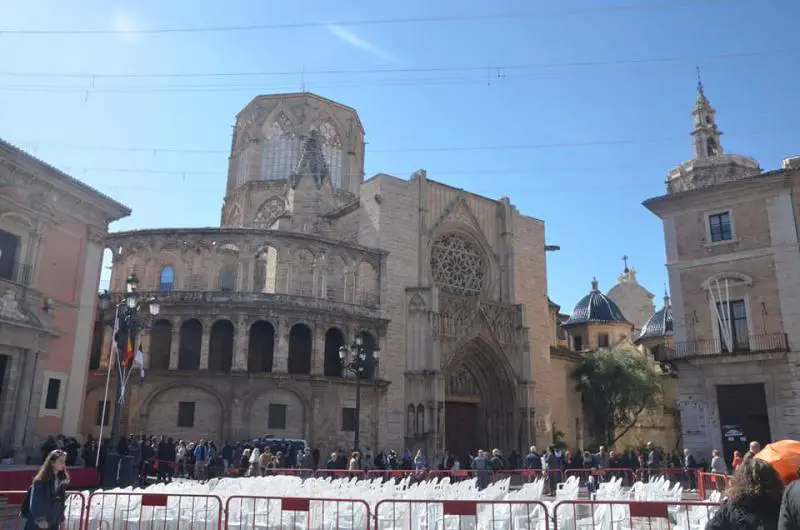
Valencia is a beautiful city with a wide range of sightseeing options. The first thing you have to do is head over to the Old Town area and start exploring the old part of the city. Visit magnificent 14th-century Serranos Gate that you can climb and admire a panoramic view of Valencia, and then continue on foot to two beautiful squares: Plaza de la Reina and Plaza de la Virgin, where the most important building of Valencia is located: an imposing Cathedral of Valencia, that also houses a museum where the Holy Chalice of Valencia is kept. You can visit the Cathedral and museum for a fee, and there is an option to book an audio tour as well.
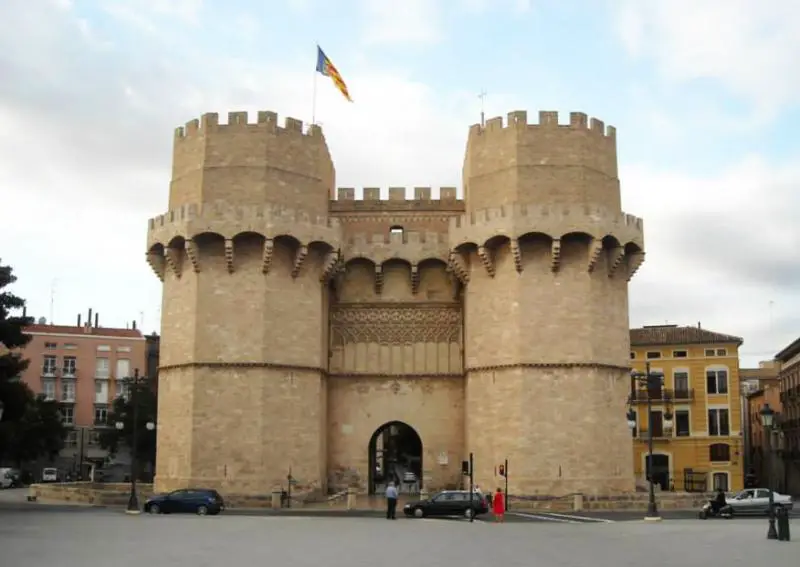
Gastronomy lovers should visit Mercado Central – a picturesque marketplace where you can choose among a wide variety of sweets, exotic fruits, vegetables, meat, fish, and other delicacies. On the opposite side of the market is La Lonja de la Seda, the famous Silk Market, located in the building that has been declared a UNESCO World Heritage Site.

Also, don’t forget to stop by Plaza del Ayuntamiento where the impressive building of Town Hall with its clock-tower is located, before heading to North Station and the famous Valencia Bullring – two popular tourist attractions reachable within a walking distance from your shuttle bus drop off point. If you are into arts and science, there is a true paradise waiting for you on the outskirts of the city – a large complex of the City of Arts and Sciences, home to the Oceanographic museum, the world’s largest marine park, and a perfect spot for families. Overall, Valencia is a true Mediterranean gem well worth visiting.
This article is written by Adventour Begins for Cruise Dig. For more guides on other cruise ports please visit adventourbegins.com
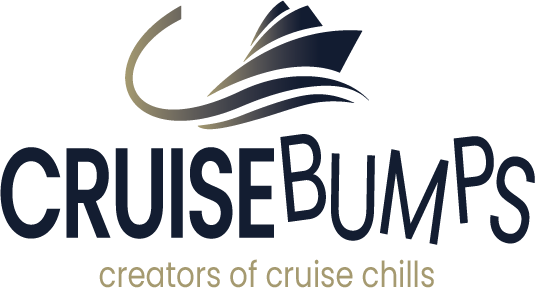
19 TIPS FOR VALENCIA
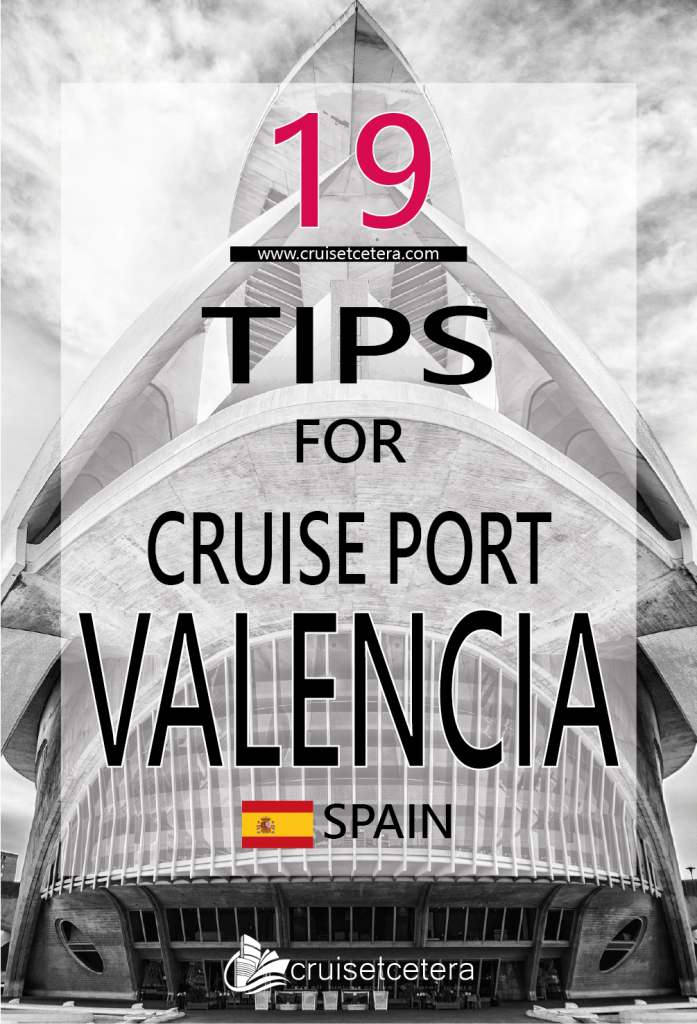
The sights and sounds of Valencia, Spain are the ones you will never forget. The taste of a strong coffee early in the morning during a walk to La Lonja de la Seda . The chatter of buyers haggling at Mercado Central. The smell of freshly cooked paella wafting through the window of a restaurant. These simple pleasures make cruises to Valencia, Spain, a must-see cruise port as a stopover on a Mediterranean cruise. Did you know Valencia is pronounced as B alencia in Spanish? We have 19 tips to spend your day in cruise port Valencia!
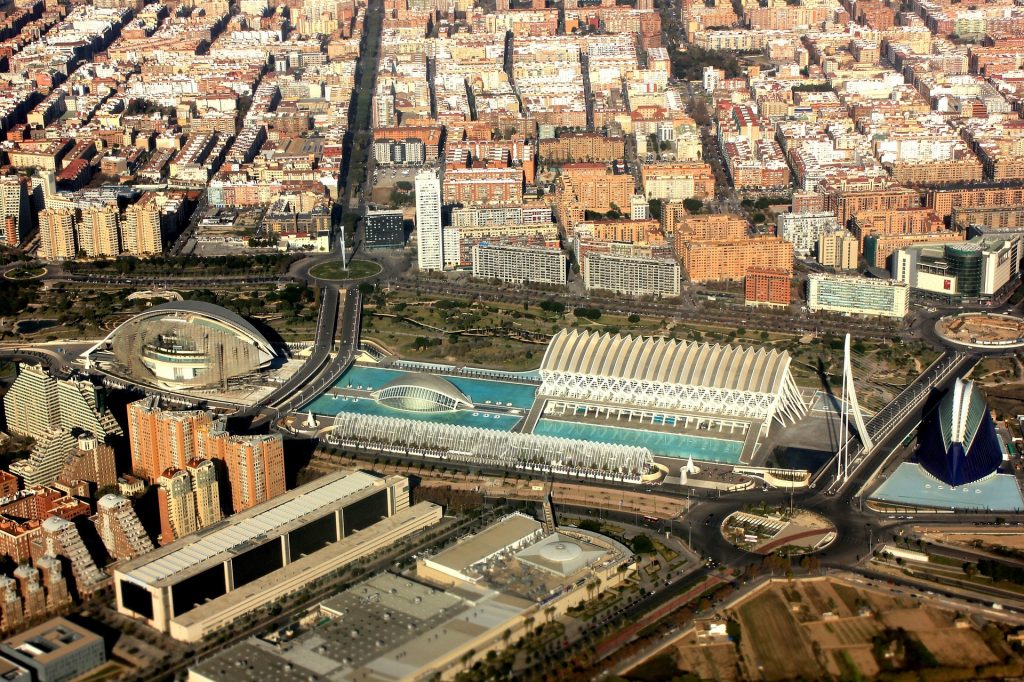
Sure, there’s sexy Barcelona and the ever-popular Madrid, but Valencia remains the artsier, more coastal brother of Spain’s great metropolises. In Valencia, dinner is served after 9 pm, and the art of tapas is strictly followed. An afternoon siesta is never discouraged, and staying out until the sun comes up is all part of the fun.
Disco bars and meetings after midnight for drinks are how the locals do it. Or take a more sleepy approach to your time in Valencia, spending the day sunbathing on Playa La Malvarrosa or visiting the city’s historic cathedrals. There is something for all energy levels and interests in Valencia. Here our tips on what to do in Valencia .
Valencia is located in the middle of Europe’s most densely developed agricultural region. It is the third-largest city in Spain , offers a great combination of cultural attractions , sun , and beach , with fantastic Valencia cruise port hotels to choose from, and plenty of cool things to do! And very important in Valencia; ‘Ciutat de les Arts I les Ciències’ . The cultural and scientific center of Valencia is a very spectacular modern building . Probably the most photographed building in Valencia.
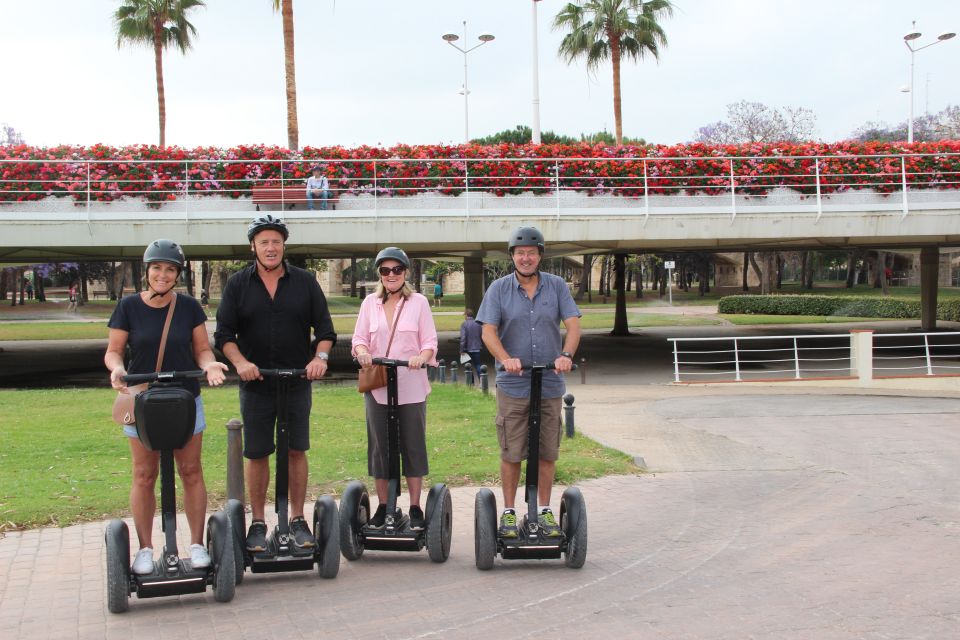
Valencia has a mix of old and new buildings , giving it a real special feel of its own. From medieval castles and towers to modernist and art deco architecture , from nice little shops to big shopping centers, Valencia has it all . And of course, there are plenty of great places to eat and drink too!
For those who just want to explore the city in an adventurous and fast way, you can also book a Grand City Private segway tour . It is really fantastic! You can book it online here.
We look at 19 cool things you can do in Valencia, most of which are either free or very cheap!
1. Ciutat de les Arts I les Ciències (Culture and Science Center)

The cultural and scientific center of Valencia is a very spectacular modern building . Valencia is known worldwide for this beautiful building. Ciutat de les Arts I les Ciències is located in the riverbed of the Turia River . It was designed by the well-known architect Santiago Calatrava .
Construction started in 1996 and the opening took place in 2009. The immense building is particularly striking because of its special design . Here you will find the opera house ‘El Palau de les Arts Reina Sofia’, the science museum ‘El Museu de les Ciències Príncipe Felipe’ , a cinema , a planetarium and an aquarium (see number 17 of this list). You cannot leave Valencia without being photographed with this building. Better yet….view the inside too.
2. The central squares – Mercado Central
The plazas or squares in Spain are often tree-lined, with gloriously cool shaded spots to escape the intense summer sun. They are normally ringed with various lanes, access points, and obscure roads, leading out onto different courtyards, and in some cases, even more, pretty plazas or squares. This square is also a must for foodies!
Mercado Central is a beautiful old (1928) market hall in Art Nouveau style . It is the oldest covered market in Europe that is still in operation. A beautiful dome of about 30 meters high with about 300 market stalls underneath where you can buy specialties from the neighborhood. The market is open from Monday to Saturday from 8.00 am to 2.30 pm, then the siesta starts.
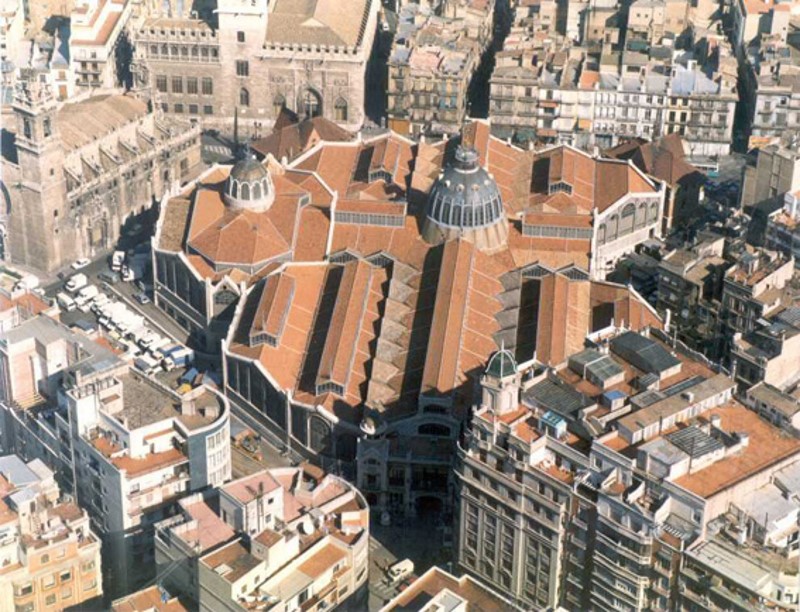
One of the most beautiful squares in Valencia is the Plaza de la Reina, or ‘ Queen’s Square’ in English, located in the old town .
3. Valencia Cathedral and The Holy Grail
At the end of the 13th century , a white cathedral was built in Valencia. It was dedicated to the Blessed Virgin Mary . The church is built in different styles. Namely the Baroque , Gothic and Romanesque styles. This makes the cathedral an impressive and playful whole. There are many art treasures to admire, including paintings by Francisco Goya . The famous ‘Holy Grail’ is also kept here. This is a chalice that broke down in the year 1785 but was restored afterward.

One of the cities’ more controversial claims to fame is that it has what is supposed to be that Holy Grail . The actual cup that Jesus drank from at the last supper , although that claim is also upheld by several other places around the world.
The cathedral is a lovely old place and is one of the top attractions in Valencia. You can actually climb to the top of the Miguelete bell tower and admire great views of the city. The most emblematic tower in Valencia is a required visit. You can climb the 207 steps of the spiral staircase and reach the top of the bell tower, where you’ll have an impressive 360º view of the city . You won’t regret it!
4. Valencia’s Central Market
Whilst the prospect of wandering around a food market is not everyone’s first choice of what to do whilst on a cruise, the historic Central Market of Valencia is another one of the top attractions in the city. Not only is it a great modernist building to admire, but it is also somewhere where visitors get a closer insight into the daily life of the Valencianos.
5. The beaches of Valencia
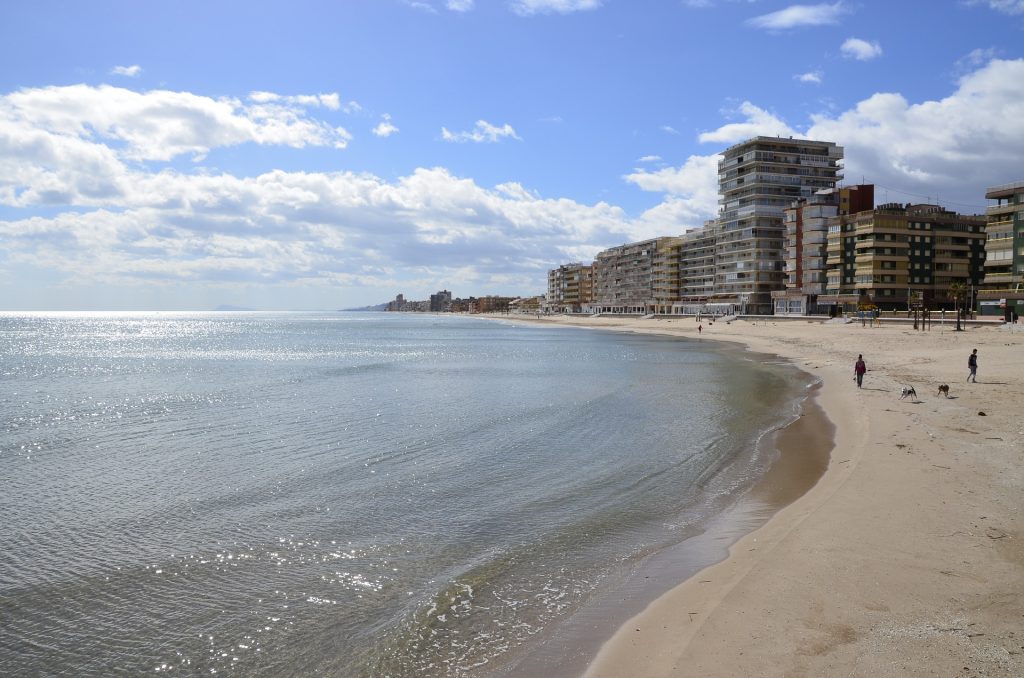
Many would say that a holiday in the sun is incomplete without a visit to the beach. Luckily, the city of Valencia has many beaches along its coastline, several of which are unspoiled and undeveloped places to sit down and chill, and maybe take a dip in the lovely blue sea here. The city beach of Valencia bears the name Playa Malvarossa . The long, wide beach is right next to the city’s harbor. In addition to the beach, you will also find a boulevard with a number of restaurants and attractive terraces.
This most popular beach, La Malvarrosa starts around the port area and is split into sections such as the Playa las Arenas and the Playa Cabanyal , eventually stretching up to the Playa de Patacona .
6. Going shopping in Valencia
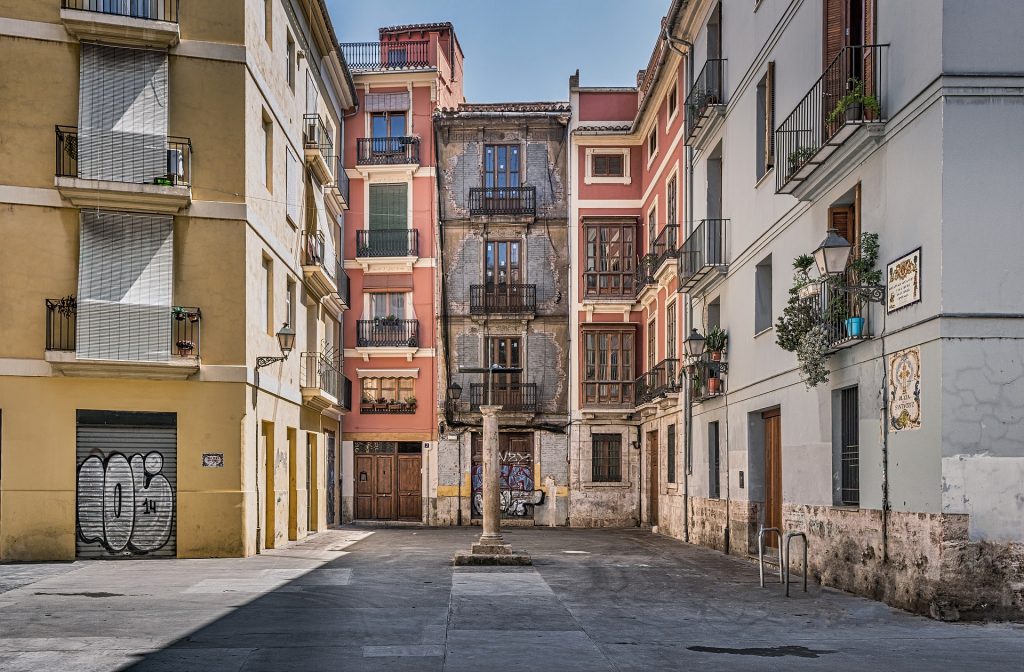
Like most large cities, Valencia offers a lot of opportunities for some great retail therapy, and you will find all the major brands have a presence here. But even a historic strawl around town will amaze you because of its beautiful vistas and hidden squares.
In addition, each barrio or area has its own street market once a week. In the main central part of the city, the streets are wide, tree-lined, and bordered by high-rise buildings of quite beautiful architectural merit.
Away from the high street shops , there are a lot more interesting and independent shops dotted around where you can get all manner of things, many with an international flavor. Did I say cheap options for Valencia before?……
7. Barrio del Carmen
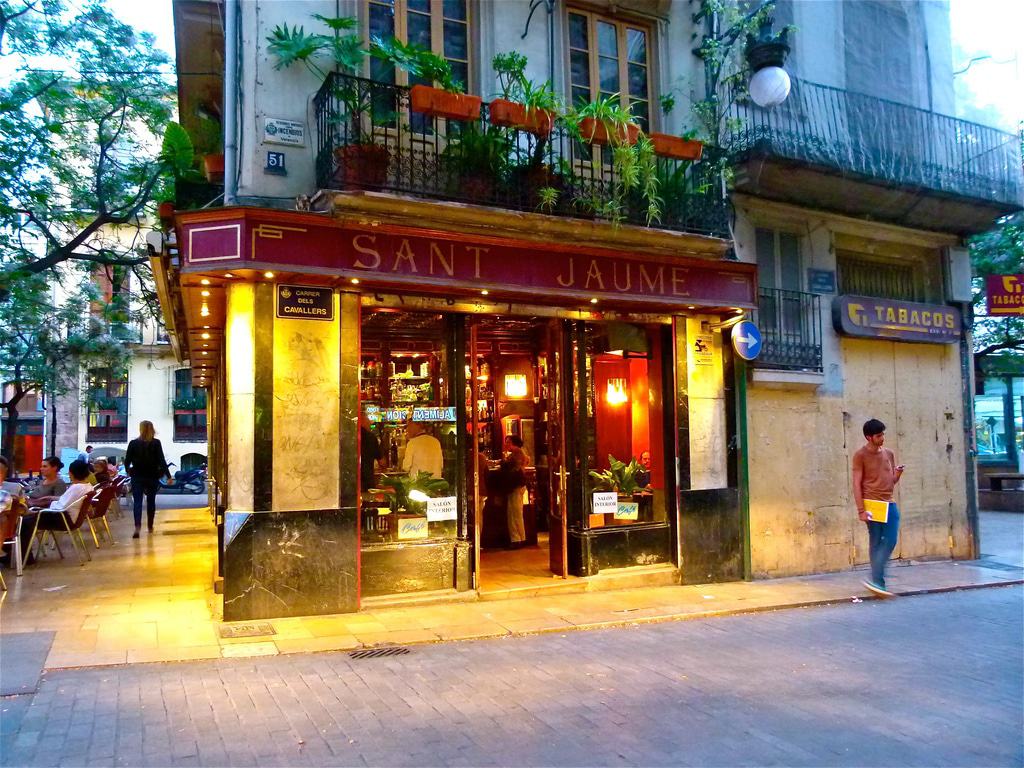
El Carmen took shape in the Middle Ages. And are located outside the 11th-century Moorish walls but within the Christian walls built in the 14th century . The northeast side of the old town is the youngest and most bohemian part of the city .
The beauty of this place is the way the palaces have been converted into hip boutiques , bars, restaurants, and nightclubs. Calle de Caballeros , which starts in Plaza de la Virgen , is where many nights out in Valencia will end.
You can also see fragments of Valencia’s late medieval defenses at Torres de Quart and Torres de Serranos .
8.Taste a real paella next to the sea
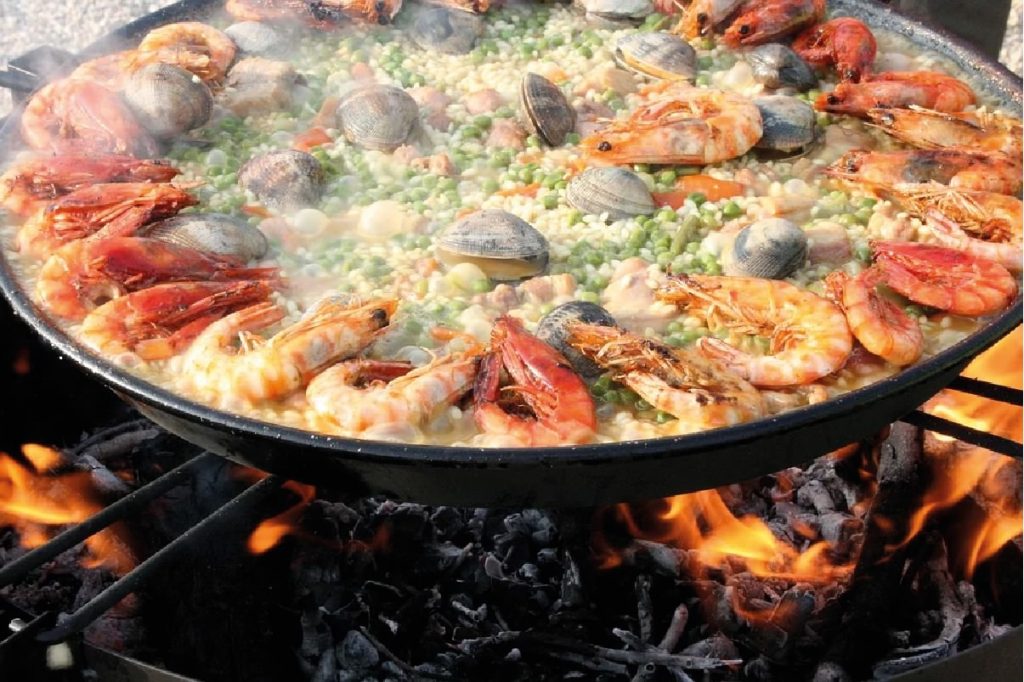
Yes, you’ve probably already planned to have paella. But what you might not know is that the most well-known dish tastes even better with a sea view. That’s why we recommend the restaurants at Las Arenas beach , with panoramic views of the Mediterranean , or those at the Albufera Natural Park . Wherever you go, you’ll love it!
9. Have a horchata and fartons

There’s no better place to have this popular drink made from “chufa” a fruit that is only grown in Valencia. Have it for breakfast or for a snack, either liquid or as a sorbet texture, and remember to ask for “fartons” to dip which will sweeten your day. You can try it at any time because, just like Vampire Weekend sang, you can drink horchata in December too!
10. Go through the Turia Garden by bike
Would you like to see Valencia from east to west without passing a single car? Then head to the river! No, it’s not a joke. The old river bed of the Turia has been converted into a leafy 9-kilometer-long garden that connects the Parc de Capçalera with the City of Arts and Sciences . If you go by bike you can discover the fantastic museums, monuments, and bridges that the river has to offer.
11. Take pictures of the spectacular sunset at the Parque Natural de la Albufera
Parque Natural de la Albufera is not located in the city of Valencia. Still, the nature park, 11 kilometers away, is definitely worth a visit. The park has a size of 200 km² and is located on a lagoon. Here you will find a very wide variety of plants and animals. There are many footpaths and walking routes to be found here, but you can also take a trip through the park by boat.
The best way of getting to know this ecologically valued lagoon is by taking a boat trip at sunset. The Albufera Natural Park offers a visual spectacle where the sky blends with the sea and, of course, you’ll be able to take some of the most beautiful photos of your trip.
12. Do a route to try tapas and beer
Grilled cuttlefish, steamed mussels, Serrano ham, clams, “esgarraet ”, baby squid, patatas bravas … If it’s already making your mouth water, just wait until you try them! You can start the route at the stalls of Plaza del Mercado, continue past the Lonja steps , the Plaza del Collado , Plaza Negrito and Calle Caballeros , finishing at Plaza de la Virgen . You will get a tapas with every drink! That will be fun!
13. Torres de Serranos
In the Middle Ages, the city of Valencia was walled . The Torres de Serranos (and the Torres de Quart) are the remains from this period. The towers are the largest city gate in Europe . On top of the gate, you have a beautiful view of the city.
14. Estadio Mestalla (football stadium)
For football lovers. Valencia is known for its football club Valencia CF . This club plays in the stadium Estadio Mestalla , which is located on the east side of the city. The stadium can accommodate 52,000 spectators. The stadium is dated. That is why, from 2007, work started on a new stadium in the northwest of the city, called Nou Mestalla . Unfortunately, the construction of this stadium was halted in 2009 due to financial problems. The new stadium will be an impressive stadium, it will accommodate 75,000 people.
15. La Lonja de la Seda (The Silk Exchange)
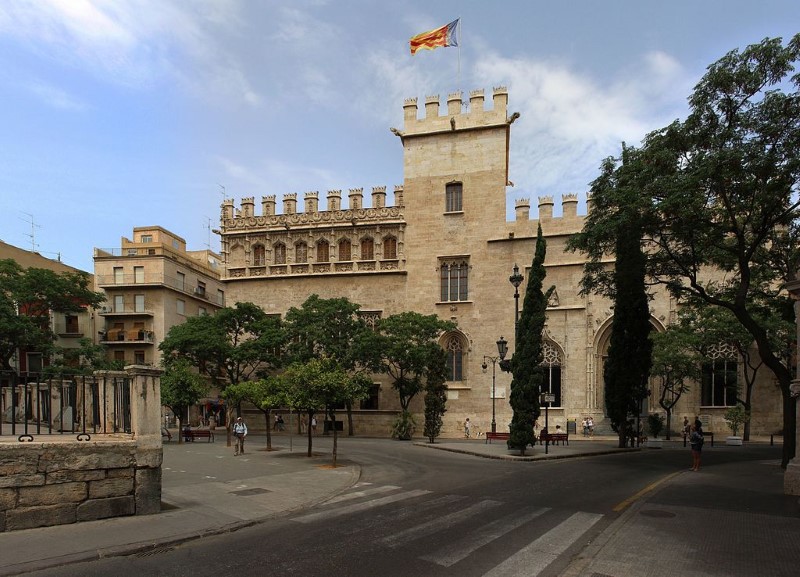
One of the most beautiful European civil Gothic buildings is La Lonja de la Seda . This 15th-century building is located in the main square Plaza del Mercado . Traditionally, the building was a silk exchange . Silk was traded here in the golden age of Valencia. The square tower in the center of the building served as a prison. You can take a look inside the building. Then you see beautifully carved ceilings, beautiful rooms, and impressive floors .
16. Plaza de Toros (Bullfighting Arena)
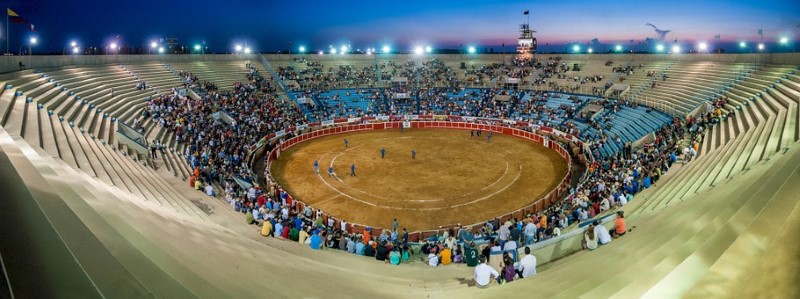
The Bullring of Valencia has been established in the center of Valencia since the mid-19th century. The building has strong similarities with the Colosseum of Rome. Plaza de Toros means ‘square of the bulls’. To this day, the typical Spanish bullfights are held here. Because we think this is a horrible tradition , we hope you don’t watch these fights. Fortunately, the arena is also used for concerts and other festivities . And the building itself is of course worth admiring.

17. L’Oceanografic (aquarium)
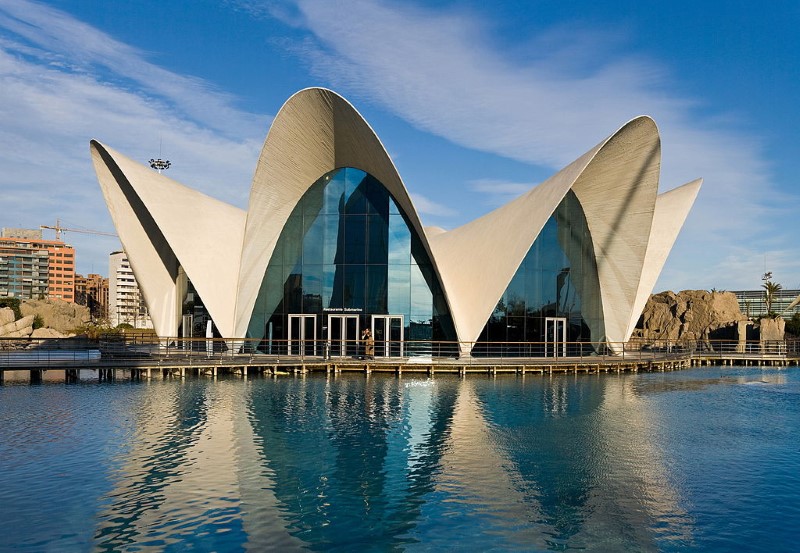
The L’Oceanográfic aquarium is located in the modern building Ciutat de les Arts i les Ciències (see above). It is designed by Santiago Calatrava and consists of nine water towers . Each tower shows a part of one of the nine oceans . In addition to many fish species, you will also find dolphins, seals, walruses, penguins, pelicans, and all kinds of sharks in this aquarium. For this aquarium, it is advisable to book tickets in advance to avoid the big lines.
18. Eixample (Authentic Quarter)
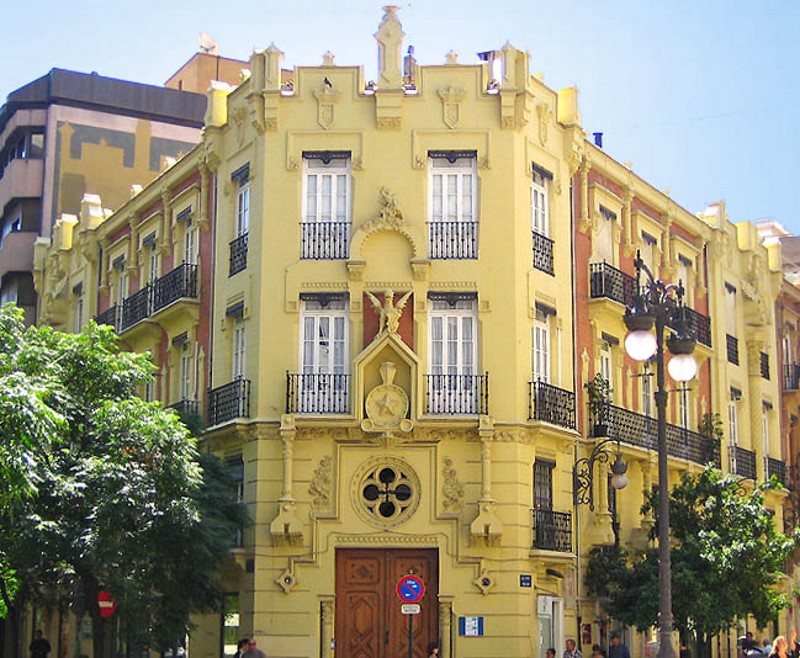
The Eixample district is located in the center of Valencia near the city hall . Here you will find authentic Valencia with many old streets and picturesque alleys . There are large chain stores here, as well as smaller, more upscale shops and boutiques . The train station ‘Valencia Estació del Norte’ is also located here. This station is very nicely decorated with mosaic and ceramics.
19. Plaza del Ayuntamiento (square)
Valencia’s main central square is Plaza del Ayuntamiento . That literally means town hall square. It has not always had this name because it has already borne several names. Around the square, you will find many old prestigious buildings . A beautiful large fountain has also been placed here, surrounded by grass and flowers. At night, the square is beautifully lit up and residents of Valencia come here to relax.
Right! I hear you thinking. Where do I find the time to get to know this city well? I only have 1 day in this cruise port! That’s what we like about a cruise. You ‘smell’ a city and decide to come back for sure. But then longer. And the bucket list just keeps getting longer and longer….. Do we love to cruise or what!!??
When you have more suggestions and tips on how to spend your day in Cruise Port Valencia do not hesitate and write a remark!

Valencia Cruise Port: What to Do in 8 Hours
The Port of Valencia lies 6km south-east of the city centre. It is the largest container port in Spain and has long been of major commercial importance for the Mediterranean region as a whole. However, for different reasons it became famous worldwide as the host venue for the prestigious America’s Cup sailing race. The 2003 even, held in Auckland, had been won by the Swiss challenger, Alinghi making it the first ever European winner in the event’s history.
Table of Contents
As Switzerland is landlocked they chose Valencia as their home base when they defended the trophy in 2007 which resulted in a major redevelopment of the port area. Today’s legacy of the event is a state of the art marina together with an extensive sports and leisure complex centred around the ‘Veles e Vents’ building.
This leisure port is located at the far north of the harbour whereas your cruise ship will have to compete with a high volume of ferries to find a berth in the dock at the Estació Marítima which is a little further south. However, with over 450,000 cruise ship passengers now visiting Valencia every year plans are afoot to build a new dedicated cruise terminal.
Once you’ve made your way to the passenger terminal you’ll often find that your cruise line has provided official shuttle transfers to Plaça De L’Ayuntamient or Plaza de la Reina in the city centre. Otherwise you have the following options:
Public Bus: There’s a bus stop outside the cruise terminal at Avenida Ingeniero Manuel Soto where you can take Bus Number 4 to Plaça De L’Ayuntamient. The journey takes around 40 minutes. Metro: Walking about 1km north from the terminal brings you to the Grau-Canyamelar metro station. Here you need to take a train on line number 5 (green) to Xátiva Station which is in the city centre, next to the Plaza de Toros. The journey takes around 35 minutes. Taxi: In order to make the most of the time you have available in Valencia you’d be best taking a taxi from the port directly to Plaza de la Reina in the historic centre. Taxis aren’t expensive, especially when shared with fellow passengers, and only take about 15 minutes.
Getting Around in Valencia
On Foot: Whilst the city of Valencia is the 3rd largest in Spain with a population of around 800,000, its historic centre where you’ll find most of the city’s tourist attractions is relatively small. On arrival from the port you’ll be able to see most of the sights of foot. By Bike: A novel way to get around is by bicycle using Valencia’s bike sharing scheme known as Valenbisi which allows visitors to borrow bikes from hundreds of bike stations strategically located around the city.
Tourist Bus: There’s always a lot of mixed opinions with regard to the relative worth of hop-on, hop-off bus services in different port cities. In the case of Valencia I’d only recommend it if you can’t, or really don’t want to take a self-guided walking tour.
The Valencia Tourist Bus runs along two routes described as ‘Historical Valencia’ and ‘Valencia Maritime’ with each one lasting approximately 90 minutes. This provides a basic overview of the city but is a very poor alternative to taking a walk around the main sights of the historic centre. These double-decker buses depart from Plaza de la Reina and include two crossover points where you can switch between the two routes.
A wide range of Valencia shore excursions are available within the city or on short trips which will get you back to the port in time for your late afternoon departure.
Self-Guided Walking Tour
Some of the main tourist attractions that you should look out for whilst walking around the historic centre of Valencia are listed below:
Plaza de la Reina: To help get your bearings in the historic centre simply make your way to this lovely square where Valencia Cathedral is located. There are a number of tapas bars and cafés around such as La Taberna de la Reina (Plaza Reina, 1) where you refuel before your sightseeing.
Valencia Cathedral: Originally a Visigothic cathedral, the structure you see today stands on what became the site of a mosque under Moorish Spain. After the city was recaptured by the Christians in 1238 it was consecrated by the Bishop of Valencia. Future construction took place over several centuries which explains why so many architectural styles are present. For many visitors the highlight of the cathedral is ‘La Capilla del Santo Cáliz’ (Chapel of the Holy Grail) which is home to what is believed to be one of the Holy Chalices used at the Last Supper.
El Miguelete: Standing right next to the Cathedral is the 14th century Miguelete Bell Tower which is one of the city’s most recognisable buildings. Visitors with enough strength can walk up its 207 steps for outstanding views over the city and to the port in the distance.
Llotja de la Seda (Plaza del Mercado): Just a few minutes’ walk from the cathedral to the south-west, this Gothic masterpiece was built between 1482 and 1533 and served as the city’s Silk Exchange. Its magnificent trading hall (Sala de Contratación) provides evidence of how important Valencia must have been as a centre of commerce in the Mediterranean region during the 15th and 16th centuries. It is recognised by UNESCO as a World Heritage Site.
Mercat Central Passengers who enjoy visiting markets during a day in port are in for a real treat in Valencia. Located directly across the street from the Silk Exchange is the ‘Mercat Central de Valencia’ which opened its doors in 1928 replacing the former ‘Mercat Nou’ which wasn’t large enough for its purpose. This beautiful, modernist structure serves as a fresh food market for the people of Valencia but also welcomes so many visitors that it is considered one of the city’s top attractions. In total there are 959 stalls on two levels together with a number of bars scattered around where you can enjoy a few tapas in the company of fellow shoppers and market traders. Many stalls start to shut up shop around 1.30pm so don’t leave it too late for your visit.
Museu de Belles Arts (Carrer de Sant Pius): Housed in the beautiful Palace of Saint Pius V, this is Valencia’s premier art gallery which wouldn’t be out of place amongst better known venues in Madrid and Barcelona. It is recognised as one of the country’s best Fine Arts museums where representatives of the Valencia School are well represented. Works by one such local artist, Joaquín Sorolla, are particularly impressive. In addition there are paintings by other famous artists including Velázquez, Goya, Murillo and El Greco. Surprisingly there is no admission fee.
Fallero Museum (Plaza Monteolivete, 4) In March every year the city of Valencia explodes into action as the annual Fallas Festival takes place attracting visitors from all over the globe. As well as fireworks and partying, the fiesta involves the burning of large papier-mâché figures (known as ‘ninots’) which often characterise local political figures or sportspeople. Most of these figures are burnt during ‘Las Fallas’ but a few are saved thanks to a vote by local people. The ‘winners’ are then displayed in this museum where survivors going as far back as 1934 are on display.
Museo Nacional de Cerámica (Carrer del Poeta Querol, 2): The city of Valencia has long been associated with the ceramics industry and is home to Lladró pottery which stands proudly on living room shelves around the world. This museum is housed in a 15th century palace and chronicles the evolution of the industry in Spain. If you’re not particularly interested in this subject it’s still worth seeing the beautiful baroque-style façade at the entrance to the building. On the other hand, Lladró fans could hop in a taxi and pay a visit to the Lladró Factory and Museum (Carretera de Alboraya) which is about 7km north-east of the city centre.
Plaza de Toros: Those passengers who took the Metro from near the port to Xátiva Station will come out right next to the bullring on arrival in the city. This historic bullfighting arena saw its first bullfight in 1859 and currently has a capacity for 10,500 spectators. It hosts events in March during the ‘Feria de Fallas’ and in July during the ‘Feria de Julio’. Entrance is via the small bullfighting museum (Museo Taurino).
Plaça De L’Ayuntamient: The Town Hall Square with its beautiful fountains is one of the city’s most important landmarks and a key node of transport. Your transfer from the port may well drop you off here. The terraces of the surrounding cafés provide a perfect place for visitors to soak up the atmosphere of the city and admire the architecture of the typical buildings which surround the square. The Plaza del Ayuntamiento is the scene of the burning of the final ‘ninot’ on the last night of the Fallas festival.
City of Arts and Sciences: Last but note least, you really must visit the ‘Ciudad de las Artes y las Ciencias’ on your way back to the ship. If you’re travelling under your own steam (not in a tour group) you’d be best taking a taxi from the historic centre to this modern attraction which only opened in 2005 and attracts over 4 million annual visitors. It is an enormous complex which includes ‘L’Oceanogràfic’ which is one of Europe’s best aquariums and L’Hemisfèric which is home to a planetarium amongst other things.
For more information take a look at the Official Website of the City of Arts and Sciences . From this site you can take a taxi back to the port in just a few minutes. If you’d prefer to spend your day in port at the City of Arts and Science rather than discovering historic Valencia you can simply take bus number 95 to get there from the bus stop near the cruise terminal. Better still, jump in a taxi and you’ll be there in less than 10 minutes.

Cruises from Valencia
System messages
Arriving in Valencia by sea, catching a first glimpse of the city slowly taking shape, making out the silhouette of the Veles e Vents building, hopefully at four o’clock, just when the fishing boats are returning to port. This is one of the best ways to approach the city. So, why not do so on a cruise?
Two companies depart regularly from the Port of Valencia, the perfect excuse to come or stay a few more days to get to know the city in depth.
Costa Cruceros offers several itineraries on different ships:
- Costa Luminosa (Valencia-Palermo-Civitacecchia/Rome-Savona-Marseille-BCN-VLC). Departures from Valencia on Tuesdays between January and February.
- Costa Toscana (València-Palermo-Civitacecchia/Rome-Savona-Marseille-Barcelona-València). Departures from Valencia on Tuesdays in April and then on Fridays between May and November.
- Costa Fascinosa (València-Barcelona-Savona-Marseille-Malaga-Cadiz- Lisbon-Gibraltar-VLC). Departures from Valencia on different days between October and November.
- Costa Favolosa (València-Savona-Marseille-Barcelona-Cadiz-Gibraltar-Casablanca-Tangiers-Malaga-València). There will be two departures in April and three on different days in October and November.
- Costa Diadema (València-Lanzarote-Santa Cruz de Tenerife-Funchal-Lisbon-Cadiz-Barcelona-Marseille-Savona-València). There is one departure in May and two in December (with stopovers (departing on Tuesdays)).
The MSC ship Seaside departs from Valencia on Thursdays between April and October to visit Marseille and Genoa. On Saturdays, the MSC Bellissima sets sail for the ports of Tarragona, Genoa, Livorno and Naples.
Other shipping companies also call at València , such as Royal Caribbean, Azamara Cruises, Aidacruises, Silversea, TUI, Viking Cruises, Norwegian Cruise Lines, Celebrity Cruises, Seabourn Cruises… Check all the cruises that pass through València here .
THE VERY BEST WELCOME
The cruise port of Valencia is 4.5 km from the city centre. Taxis will take you wherever you wish to go or bus lines will take you to the city’s historic centre or to the Ciudad de las Artes y las Ciencias. If your cruise berths at the docks known as Cruceros 1 or Cruceros 2 , there is an internal free shuttle to the Transmediterránea terminal.
GET THE BEST OUT OF YOUR VISIT
If you want to discover the city on your own, buy the 24-hour Valencia Tourist Card . With this card, you will have unlimited access to public transport, free entrance to museums and municipal monuments and discounts on other tourist attractions, shops, restaurants and tourist services.You can also use the Tourist Bus to get to know the essence of València in a few hours and in comfort.
HOW TO GET THERE
Oficina de Turismo València Puerto -Tourist Info Valencia Port, Moll de Ponent, Valencia, Spain
Get directions
What to see in valència.
The quick guide for cruisers to know what to see and what to do if you spend little time in Valencia
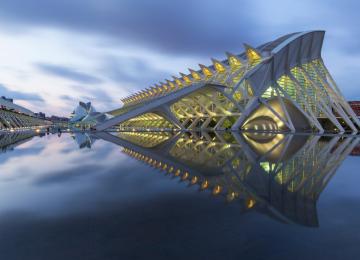
10 Essential places to visit
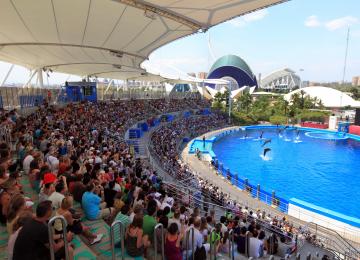
València Top Attractions
You may also be interested in.
Discover the best of València and enjoy the city.
Don't miss a thing!

Tourist Information Office Beach
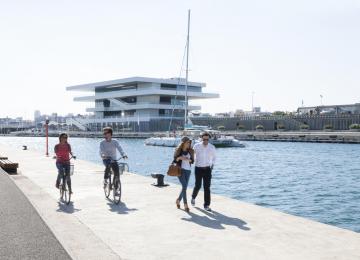
Marina of Valencia
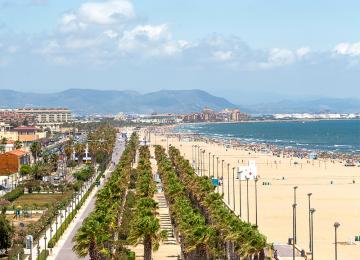
Valencia Beaches
Subscribe to our newsletter.
Do not miss the best plans in Valencia!
© VISIT VALÈNCIA 2024 | FUNDACIÓ VISIT VALÈNCIA

Valencia, Spain
Europe - Western Europe
Spain's third-largest city, and capital of the province of Valencia, comes as a pleasant surprise to many. Home to paella and the Holy Grail, it is also blessed with great weather and the spring festival of Las Fallas, one of the wildest parties in the country.
Valencia, Spain Location
Valencia, Spain cruise port is located on the east coast of Spain, on the Mediterranean Sea. It is situated in the city of Valencia, which is the third-largest city in Spain. The port is located in the heart of the city, near the historic center, and is easily accessible by car, bus, or train. It is also close to the airport, making it an ideal port for cruise ships.
Valencia, Spain is known for its vibrant culture and stunning architecture. Visitors can explore the city's many historical sites, such as the ancient city walls and the Gothic cathedral. There are also plenty of museums, galleries, and other cultural attractions to explore. For those looking for a more active experience, Valencia offers plenty of outdoor activities, such as hiking, biking, and kayaking. The city also has a lively nightlife, with plenty of bars, clubs, and restaurants to choose from. Whether you're looking for a relaxing getaway or an exciting adventure, Valencia has something for everyone.
Cultural Experiences
Valencia is a city steeped in culture and history. Cruise passengers can visit the Cathedral of Valencia, the Silk Exchange, or the Central Market. There are also plenty of festivals and events throughout the year, making it a great place to experience the local culture and customs.

Valencia's Fallas Festival
Valencia's Fallas Festival is an annual celebration held in March in the city of Valencia. The festival is a celebration of the arrival of spring and is marked by the burning of large papier-mâché figures known as 'fallas'. The festival also includes parades, fireworks, and other festivities. It is one of the most popular festivals in Spain and attracts thousands of visitors each year.
Beach Activities
Valencia is home to some of the best beaches in Spain. Cruise passengers can spend the day sunbathing, swimming, or taking part in a variety of water sports. There are also plenty of beach bars and restaurants to enjoy, making it a great place to relax and unwind.
Exploring the City
Valencia is a vibrant city with plenty to explore. Cruise passengers can take a stroll through the old town, visit the City of Arts and Sciences, or explore the many museums and galleries. There are also plenty of shops, restaurants, and bars to explore, making it a great place to spend a day or two.
Valencia is a popular cruise port in Spain, offering a variety of excursions for visitors. From exploring the city's historic architecture to taking a stroll along the beach, there is something for everyone. Visitors can also enjoy a variety of cultural activities, such as visiting museums, galleries, and markets. Nature lovers can explore the nearby mountains and forests, while foodies can sample the local cuisine. There are also plenty of opportunities for shopping, from traditional markets to modern shopping malls. No matter what your interests, Valencia has something to offer.
Cruise ships dock at the Port of Valencia, located on the east coast of Spain.

Valencia Cruise Terminal South
Valencia Cruise Terminal South is a smaller port of call for cruise ships in Valencia, Spain. It is located in the city center and is easily accessible by public transportation. The terminal offers a variety of services, including check-in, baggage handling, and a variety of shops and restaurants. It is also home to a number of attractions, such as the City of Arts and Sciences and the Oceanografic Aquarium.

Valencia's Turia Gardens
Valencia's Turia Gardens are a 9-kilometer long park located in the city of Valencia. The park was created in the 1960s when the Turia River was diverted from the city center. The park is home to a variety of plants and trees, as well as several monuments and sculptures. It is a popular spot for locals and visitors alike, offering a peaceful respite from the hustle and bustle of the city.

Valencia Cruise Terminal
Valencia Cruise Terminal is the main port of call for cruise ships in Valencia, Spain. It is located in the city center and is easily accessible by public transportation. The terminal offers a variety of services, including check-in, baggage handling, and a variety of shops and restaurants. It is also home to a number of attractions, such as the City of Arts and Sciences and the Oceanografic Aquarium.

Valencia Port Authority
Valencia Port Authority is the governing body of the port of Valencia. It is responsible for the management and operation of the port, as well as the safety and security of the vessels that enter and leave the port. The port authority also provides a variety of services to cruise ships, including customs clearance, immigration services, and port fees. It is located in the city center and is easily accessible by public transportation.
Valencia is home to some of the most beautiful beaches in Spain. The beaches near the cruise port are some of the best in the area. Playa de la Malvarrosa is a long stretch of golden sand with crystal clear waters and plenty of beach bars and restaurants. Playa de la Patacona is a great spot for families, with shallow waters and plenty of amenities. Playa de Las Arenas is a popular beach with a lively atmosphere and plenty of activities. Playa de la Devesa is a quieter beach with a more relaxed atmosphere. Finally, Playa de la Pineda is a great spot for sunbathing and swimming.

Playa de la Malvarrosa
Playa de la Malvarrosa is a popular beach located just a few minutes from the Valencia cruise port. It is a wide, sandy beach with plenty of amenities, including restaurants, bars, and beach umbrellas. It is a great spot for swimming, sunbathing, and enjoying the Mediterranean Sea. It is also a great spot for people watching, as it is a popular destination for locals and tourists alike.

Playa de las Arenas
Playa de las Arenas is a stunning beach located just a few minutes from the Valencia cruise port. It is a wide, sandy beach with plenty of amenities, including restaurants, bars, and beach umbrellas. It is a great spot for swimming, sunbathing, and enjoying the Mediterranean Sea. It is also a great spot for people watching, as it is a popular destination for locals and tourists alike.

Playa de la Patacona
Playa de la Patacona is a beautiful beach located just a few minutes from the Valencia cruise port. It is a wide, sandy beach with plenty of amenities, including restaurants, bars, and beach umbrellas. It is a great spot for swimming, sunbathing, and enjoying the Mediterranean Sea. It is also a great spot for people watching, as it is a popular destination for locals and tourists alike.
Valencia is known for its wide variety of shopping options, from traditional markets to modern shopping malls. The city is home to a number of popular shopping streets, such as Calle Colón, Calle de la Paz, and Calle de la Reina. Visitors can find everything from designer clothing and accessories to local crafts and souvenirs. Valencia is also known for its vibrant nightlife, with a variety of bars, clubs, and restaurants.

El Corte Ingles
El Corte Ingles is a large department store located near the Valencia cruise port. It is the perfect place to find souvenirs, as it has a wide variety of items ranging from clothing and accessories to electronics and home goods. The store is open daily from 10am to 10pm, and it is a great place to find unique gifts for friends and family. It is also a great place to find traditional Spanish items, as there are many items that are made in Spain.

Valencia's City of Arts and Sciences
Valencia's City of Arts and Sciences is a cultural and architectural complex located in the city of Valencia, Spain. It was designed by Santiago Calatrava and Félix Candela and was built between 1998 and 2005. The complex consists of several buildings, including an opera house, a planetarium, an IMAX cinema, an oceanographic park, and an interactive science museum. It is one of the most visited attractions in Valencia and is a symbol of the city's modernity and progress.

La Lonja de la Seda
La Lonja de la Seda is a historic building located in the heart of Valencia. It is the perfect place to find souvenirs, as it has a wide variety of stalls selling traditional Spanish items such as jewelry, pottery, and textiles. The building is open daily from 10am to 6pm, and it is a great place to explore and find unique gifts for friends and family. It is also a great place to learn about the history of Valencia, as there are many displays and exhibits about the city's past.

Mercado Central
Mercado Central is a large indoor market located in the heart of Valencia. It is the perfect place to find souvenirs, as it has a wide variety of stalls selling everything from traditional Spanish food and drinks to handmade crafts and jewelry. The market is open daily from 8am to 2pm, and it is a great place to explore and find unique gifts for friends and family. It is also a great place to sample some of the local cuisine, as there are many food stalls offering traditional Spanish dishes.
Is Valencia, Spain a good port?
Yes, Valencia, Spain is a great cruise port. It is a popular destination for cruise ships, offering a variety of attractions and activities for visitors. The city is known for its beautiful architecture, vibrant culture, and delicious cuisine. Cruise ships often dock in the port of Valencia, allowing passengers to explore the city and its surroundings.
Is Valencia, Spain a safe port?
Valencia, Spain is generally considered a safe cruise port. The city has a low crime rate and is generally considered safe for tourists. However, as with any city, it is important to be aware of your surroundings and take precautions to protect yourself and your belongings.
Can I rent a car in Valencia, Spain?
1. Europcar: Europcar is a car rental company located just a few minutes away from the Valencia cruise port. They offer a wide range of vehicles, including economy, luxury, and family cars.2. Hertz: Hertz is another car rental company located near the Valencia cruise port. They offer a variety of vehicles, including economy, luxury, and family cars.3. Avis: Avis is a car rental company located near the Valencia cruise port. They offer a wide selection of vehicles, including economy, luxury, and family cars.4. Sixt: Sixt is a car rental company located near the Valencia cruise port. They offer a variety of vehicles, including economy, luxury, and family cars.5. Goldcar: Goldcar is a car rental company located near the Valencia cruise port. They offer a wide selection of vehicles, including economy, luxury, and family cars.
What is the WiFi situation like in Valencia, Spain?
The Valencia Cruise Terminal offers free wifi access to all passengers. Additionally, there are several cafes and restaurants in the area that offer free wifi access.
What is the physical address for the Valencia, Spain port?
The address of the Valencia, Spain cruise port is Muelle de la Aduana s/n, 46024 Valencia, Spain.
33 Top Reasons to Visit Valencia: Why See the Spanish City
- Post author: Naddya
- Post category: City Travel
- Post published: February 8, 2023
If you’re wondering whether to put the Mediterranean city on your itinerary, let us tell you this:
Valencia is worth visiting for its incredible historical, cultural, and culinary surprises. Architecture buffs will love the mind-bending City of Arts and Sciences ; nature lovers – the gorgeous Turia Park ; food aficionados – the traditional cuisine; and culture vultures – the diverse museums.
On top of that, Valencia is cheaper than Barcelona.
In this article, you’ll find the top 33 reasons to visit Valencia, Spain . By the end of the article, you’ll understand why people go to the third-largest Spanish city.
Buckle up and let’s discover!
Start Planning Your Trip to Valencia with Our BEST Recommendations:
⭐ Top Tours in Valencia ⭐
📍 Tuk-Tuk Tour Around the City – discover Valencia in an entertaining and comfy way.
📍 Wine & Tapas in a Historic Building – a guided walk through the Old Town and delectable wines and tapas in an 11th-century building.
⭐ Best Accommodations in Valencia ⭐
🏨 Caro Hotel – the best luxurious experience in the heart of Valencia’s Old Town.
🏨 Amazinn Places EVIapartments – funky, modern apartments with great amenities.
⭐ Easiest Transportation Options in Valencia ⭐
🚍 Valencia Tourist Card – enjoy discounts, free travel, and entrances to museums.
🚍 Discover Cars – compare and find the best rates for car rentals.
✅ Note : This article contains affiliate links . In case you purchase something through one of these links, we may receive a small commission at no extra cost to you. Thank you for helping us keep creating the free content on this website!
Visit Valencia for the Incredible Foods and Drinks
The coastal town is the birthplace of some of the most famous traditional dishes in the country. Get a napkin now, because the following section enlists the foods and drinks that make Valencia worth visiting.
- Paella . Spain’s most popular meal originates from Valencia. The classic paella features fried chicken, rabbit, tomatoes, beans, and rice. Our favorite version is paella de mariscos , which epitomizes seafood. If you’d like to taste the original, head to Albufera Natural Park. The birthplace of paella is the small village of El Palmar, about 16 mi (25.5 km) from Valencia. We recommend joining this excursion .
- Fideuà . This pasta dish hails from the small Valencian town Gandía. Fideuà is very similar to paella, but instead of rice, it combines noodles and seafood. The rice noodles in the fideuà soak up the broth and tomato-pepper sauce while cooking, which brings out the rich seafood flavors. Enjoy it with a generous splash of lemon.
- All-i-pebre . The fiery stew all-i-pebre is only for the most adventurous travelers. It brings together eel, potatoes, almonds, garlic, and chili peppers to redefine the term scrumptiousness. If you love spicy food, order this amazing combo. Our best advice is to get lots of bread and beer on the table, too – to be able to put out the fire in your mouth.
- Cocas . If you like pizza, you’ll love cocas ! You can eat these diverse flatbreads with a variety of toppings, either sweet or salty. The options include vegan, vegetarian, fish, meat, and every other imaginable combination. Valencianos love cocas a lot and prefer them over pizza. They might even try to convince you their dish is tastier than the Italian one. We’ll leave it to you to decide which one’s your favorite.
- Turrón . The mouthwatering sweet seduction from Valencia is a nougat confection made of sugar, honey, and egg whites. It’s toasted with almonds or other nuts, and its purpose is to send your taste buds into culinary heaven. Turrón comes in a huge variety of flavors and textures, so make sure to try as many as you can. It makes a perfect souvenir to bring home, too.
- Bunyols . Usually associated with the colorful Las Fallas festival in March, these sweet, deep-fried donuts will give you plenty of energy to enjoy the parade to the fullest. The yeast dough is often flavored with anise and pumpkin. For the ultimate foodgasm, dip your buñuelos (or bunyols ) into a cup of thick hot chocolate.
- Horchata . Popular not only in Valencia but everywhere in Spain, horchata is a beverage that looks like a milkshake. However, the refreshing drink is made of tiger nuts (“chufas” in Spanish). You can enjoy it hot or cold, and add a ton of different flavors to it. Naddya’s favorite is the lemon horchata. The beverage is so popular there’s even a museum dedicated to it. Visiting Alquería El Machistre is one of the most peculiar things to do in Valencia .
- Agua Valenciana . Invented in 1959 in Cafe Madrid de Valencia, this staple cocktail hasn’t lost its popularity since. Valencian Water, as the name translates, has nothing to do with water, though. The cocktail brings together gin, vodka, and orange juice, which join forces with cava, the Spanish sparkling wine, for a powerful punch.
- Oranges . The sweet citrus fruits farmed in the Valencian region are famous for their extraordinary flavor and sweetness. They’re harvested at their optimum ripeness, which means there’s no better place to order a glass of zumo de naranja (freshly squeezed orange juice) than the cafés of Valencia. If you want to stock up on vitamin C, visiting Valencia and devouring locally-produced oranges is a must.
Go to Valencia for the Jaw-dropping Attractions
Valencia is worth visiting for its diverse landmarks . Medieval structures, eclectic museums, vibrant marketplaces, and lush parks all await you in the gorgeous Spanish city. Let’s explore them below.
- City of Arts and Sciences . The slick, surprising curves of the futuristic Ciudad de las Artes y las Ciencias have earned the landmark a spot among the so-called 12 Treasures of Spain. It’s also among the things Valencia is most famous for . The mind-boggling complex consists of several attractions, such as:
- Museu de les Ciències Príncipe Felipe – an interactive science museum.
- L’Oceanogràfic – the largest oceanographic aquarium in Europe.
- L’Hemisfèric – an IMAX cinema, laserium, and planetarium.
- Palau de les Arts Reina Sofia – an opera house and a performing arts center.
- L’Umbracle – a sculpture garden and a trail featuring indigenous plants.
- L’Àgora – a covered plaza, which hosts music concerts and sporting events.
- Valencia’s Old Town . Ciutat Vella (the Old Town) offers a walk through history . It consists of five neighborhoods and is perfect for soaking up the city’s lively vibe. The most notable spots in Valencia’s historic center include the bustling Plaza de la Reina , the Gothic Valencia Cathedral , the Modernist Central Market , and the medieval Torres de Quart . You should also explore the intricate collections at the National Ceramics Museum and the fascinating history of the Silk Exchange .
- Turia Gardens . If you decide to take a break from sightseeing, head to the gorgeous Túria Park . The extraordinary recreational area spans the city. In the 1960s, the authorities diverted the Turia River as it was often flooding Valencia. They then turned the dried riverbed into one of the best green spaces in Europe. The park invites for a picnic, exercising, strolling, or relaxing in the shade. Several historic bridges, charming ponds, and quirky sculptures make it even more exciting to visit.
- Valencia Cathedral . The 13 th -century Valencia Cathedral embodies Gothic-style architectural elements. The temple dominates the skyline of the Old Town. The stunning church is dedicated to Saint Mary and contains several priceless 15 th -century paintings. Hidden in one of the chapels, it holds a chalice that locals insist is the Holy Grail itself.
- Estacio del Nord . When traveling from Barcelona to Valencia , your train will arrive at Estacio del Nord . Valencia’s central railway station is not only a major transportation hub but also a magnificent example of the Valencian Art Nouveau style. The building was inaugurated in 1852. The lavishly decorated façade will capture your eyes, but the interior is equally stunning. It features mind-blowing decorations including intricate tiles, mosaics, and stained-glass windows.
- Central Market . Another magnificent Valencian Art Nouveau structure is Mercado Central. The marketplace from the beginning of the 20 th century pays respect to its older neighbors by incorporating architectural elements from their styles. You can see Gothic and Baroque influences in the domes at the crossings of the wrought-iron roof. The stunning covered market is also one of the largest in Europe. Stroll between the countless colorful stalls, where you’ll find fresh fish, fruits, and veggies.
- Silk Exchange . La Lonja de la Seda integrates the late Valencian Gothic style. In the 17 th and 18 th centuries, silk and textile trading was a viral part of the Valencian economy. The Silk Exchange is where most of the business occurred. The complex consists of three structures. The most important one is The Contract Hall. As the name suggests, merchants worked out the details of their deals inside. Two large twisted columns hold the roof over the intricate space. Don’t skip the other structures and learn their peculiar history as well.
- Jardí Botànic . The Botanical Garden is one of the green lungs of the city. It’s part of the University of Valencia. The historic garden opened its doors in 1802 and remains a center for study, education, and public use. Inside, you’ll discover several ecosystems. Endemic and endangered Mediterranean species coexist with rare exotic succulents and gigantic palm trees from around the world.
- Playa de Malvarrosa . You can’t go to Valencia and not visit its beaches. Malvarrosa Beach is not only the city’s most famous stretch of sand. It’s also its longest. Here, you can entertain yourself with beach volleyball, outdoor fitness equipment, and kids’ playgrounds. Don’t miss sampling local delicacies and cool refreshments at Playa del Malvarrosa’s funky restaurants.
- Las Arenas Beach . Another very popular sand stretch in the Spanish city is Playa del Cabanyal , also known as Playa de las Arenas . Unfortunately, it’s also the busiest, especially in summer. If you don’t mind the crowds, finding it is easy. Las Arenas is the first beach north of the massive Port of Valencia.
- Playa de la Patacona . Also known as Alboraya , you’ll find this fantastic sandy beach next to Playa de Malvarrosa. The azure waters of the Mediterranean Sea, the unique vibe of the beach, and its clean bright sand make this a wonderful spot to relax. When you grow tired of sunbathing and swimming, take a stroll under the canopy of tall palm trees that dot Playa de la Patacona ’s boardwalk.
Go to Valencia for the Astonishing Museums
Spain’s third-largest city boasts a ton of stunning exhibitions. In the following section, you’ll discover the museums and galleries Valencia is worth visiting for. Let’s dive into the world of science and art!
- Science Museum . Part of the mind-boggling City of Arts and Sciences complex, Museu de les Ciències Príncipe Felipe is worth checking out even if science is not your thing. It’s housed in a building shaped like a whale skeleton. Inside the interactive museum, you can admire anything from explosions to groundbreaking technologies. Check out Foucault’s Pendulum to see the proof of Earth’s motion in action. Visit the museum’s website to catch some of the fun events it organizes.
- Museu de Belles Arts de València . With its nearly 2,000 pieces, The Museum of Fine Arts of Valencia is a true hidden gem for culture vultures. The art on display dates from medieval times to the modern age, and includes works mainly from Valencian and Spanish artists. Don’t miss the highlights of the exposition: the self-portrait of Diego Velázquez, the “Altarpiece of Arts” by Gonzalo Pérez, Goya’s “Playing Children”, and El Greco’s “St. John the Baptist”.
- Museo Nacional de Cerámica y Artes Suntuarias González Martí . The exhibition contains ceramics, pottery, and decorative arts covering periods from ancient Roman to contemporary times. Glassware, metalwork, textiles, costumes, and furniture have also made it into the collection of the National Museum of Ceramics and Decorative Arts . One of the highlights is the world’s largest Valencian ceramics exhibit. The items date back to the 16 th century. The palace, which houses the museum, reflects 18 th -century Valencian Baroque architecture and is worth exploring for its design.
- Museo del Arroz . As we’ve established in the foods and drinks section, rice plays a huge role in Spanish cuisine. So, when you visit Valencia, don’t skip this unusual museum near the port. At Museo Del Arroz , you’ll explore the history of farming and the mechanics of processing the staple food. You’ll also discover more about rice cultivation and the central role it plays in the cuisine of Valencia.
- Museo Taurino . Despite its controversy, bullfighting is a huge topic in Spain. If you want to explore the history of this dangerous yet traditional activity, head to Museo Taurino . Its exhibition shows you tools from the 18 th , 19 th , and 20 th centuries, and showcases the history and features of this Spanish practice. The museum is adjacent to Plaza del Toro, a bullfighting arena that’s still functioning today.
- L’Iber . Valencia boasts many unconventional museums, but L’Iber Museo de Los Soldaditos de Plomo might be the most unusual of them. L’Iber hosts the world’s biggest collection of historical miniatures. Inside its exhibition rooms, you can see nearly 100,000 pieces. The miniatures tell the history of Valencia and Spain, from the prehistoric and ancient eras until today. Note that the museum is open only on weekends.
- L’Almoina . Almoina Archaeological Museum brings together a huge collection of archaeological pieces from the history of Valencia and the region. You’ll discover artifacts from the city’s foundation by the Romans in the 2 nd century BC till the Middle Ages. L’Almoina is next to the Valencia Cathedral and covers 27,000 sq. ft. (2,500 sq. m). Ruins from several periods of the city’s development will transport you back in time.
- L’Oceanogràfic . The gigantic Oceanographic is another place in the City of Arts and Sciences complex that you should pay a visit to while in Valencia. It’s the largest oceanographic aquarium in Europe, housing 45,000 animals from 500 species. The attraction features several sections, each representing a different marine ecosystem. You can see Mediterranean, tropical, temperate, and polar creatures in the oceanarium’s waters. Don’t miss observing the dolphin show, the beluga family, and the penguins. Check out the submarine restaurant, too.
Travel to Valencia for the Peculiar Festivals
Following Spain’s tradition in organizing bizarre fests, the birthplace of paella adds a specific layer to the country’s quirkiness. In this section, you’ll discover the festivals worth seeing in Valencia.
- Las Fallas . Taking part in this wild festival is among the craziest reasons to visit Valencia. Las Fallas celebrates the beginning of spring and the fest reaches its peak on March 15 and 16. That’s when the “falleros” have just one night to build the gigantic Ninot Fallas. The fallas are massive figures from wood and paper-mâché that reach up to 49 ft. (15 m). They parade on the streets of Valencia in front of spectators and judges. The jury then chooses the best figure, and the rest gets burned.
- Carnaval . If you travel to the Spanish city in February, don’t skip the chance to take part in the carnival festivities. Even though the local carnaval is not as extravagant as the ones in Cádiz and Tenerife, it’s still one of the reasons people visit Valencia. The celebrations include funky street parades, extravagant costumes, and lively music.
- Fiesta de San Vicente Ferrer . Visiting Valencia in April? You can join the festival in honor of San Vicente Ferrer. Locals have been celebrating the patron saint of the community of Valencia since the Middle Ages. The most important day of the Fiesta de San Vicente Ferrer is April 5, when a grand procession overtakes the streets of Valencia. The participants dress in traditional Valencian costumes and carry candles, making the sight a visual feast.
- Feria de Valencia . This fall festival reveals the distinctive culture and vibe of Valencia. An array of events featuring performing arts, film, opera, theater, and concerts entertain the crowds. The culmination of Feria de Valencia is the spectacular firework display that lights up the night sky.
- La Tomatina . Just 24 mi (39 km) west of Valencia, the small town of Buñol hosts the largest tomato fight in the world. During La Tomatina , Participants throw more than 125 tons of ripe tomatoes at each other for two hours straight. The crazy tradition began in 1945, and has gained huge popularity throughout the world. Personally, we don’t approve of the insane waste of fruit, but if you’ve ever wanted to smash tomatoes in other people’s faces, travel to Buñol in August.
Now You Know Why You Should Visit Valencia, Spain
There you have it – the best 33 reasons to visit Valencia .
The birthplace of paella will steal your heart with its gorgeous beaches, extravagant attractions, fun festivals, and peculiar museums.
To best prepare for your trip, don’t miss our top Valencia travel tips .
Now, we’re wondering:
Do you think Valencia is worth seeing?
Share your view in the comments below.
You Might Also Like
33 amazing facts about barcelona, the 33 best day trips from vienna to explore europe, the best day trip from vienna to salzburg: all the details, this post has 2 comments.
Gosh! Valencia looks lusciously lovely. I want to go there. Now! Arthur, book the flights!
Hey Connie,
Valencia is absolutely gorgeous! You and Arthur will definitely have a blast 🙂
Let us know if you need help planning your trip 😉
Cheers, Naddya and Svet
Leave a Reply Cancel reply
Save my name, email, and website in this browser for the next time I comment.
Cookies Consent
Privacy overview.
Visit Valencia, Spain; a visitors guide to the beautiful city of Valencia

Visit Valencia
Valencia is capital of the province of Valencia in Spain's region of Valencia and Murcia . Valencia is Spain's third largest city.
It is famous throughout Spain for its nightlife and for its festival, Las Fallas. It also has a lovely old quarter and a new and very impressive new cultural complex, the Ciudad de las Artes y Ciencias, City of Arts and Science.
Explore Valencia
Spain This Way review: Valencia is one of our favourite Spanish cities and great for a citybreak. It has some great architecture, a vibrant atmosphere and also the fabulous "City of Art and Science".

Valencia was founded by the Romans in 137 BC but became a Muslim city for five centuries with a brief interruption when El Cid took the city. Its muslim past is is reflected in its architecture.
Valencia was a prosperous centre for silk, paper, leather and ceramics under Muslim rule. In 1238 James I of Aragon took the city which became part of his Catalan kingdom. It still has very strong Catalan ties.
In the 15th and 16th centuries Valencia became a very prosperous city but lost importance after both the Spanish War of Succession and the Spanish Civil War as it was on the losing side on both occasions.
The main sights of Valencia are contained within a curve of what was once the river Turia (rio Turia). The river has however been diverted and the old river bed is now a 7km long park.
The oldest quarter of the town is the Barrio del Carmen. In this quarter there are lots of little streets and alleys to explore. Following a lengthy decline this area is now being renovated and there are lots of cafés and bars allowing you to pause and admire the old town houses lining the streets.
The Plaza del Ayuntamiento is the main square of Valencia and most of the sites are near to here. On one side of the square is the stunning town hall flanked by lots of beautiful buildings. On the opposite side is the post office building with its metal tower.
Inside the square are a number of charming flower kiosks displaying a colourful variety of cut-flowers. At the lower end of the square the fountain has a continuous display of cascades of water and on a night these are coloured too.
Continue northwards of here and you get to the huge, modernist style Covered Market, the Mercado Central, which is beautiful both outside and inside. Inside the range of fruit and vegetables and fish and cheese etc is quite astonishing and extremely colourful. A great place to put together a picnic!
On the other side of Plaza del Mercado is La Lonja de la Seda . This is a 15th century Gothic Silk Exchange and has a magnificent Hall of Columns. It is a UNESCO World Heritage Site.
A little further north east is the cathedral of Valencia. The cathedral has a Baroque main entrance but it is a mix of architectural styles, including Renaissance and Gothic.
Inside the cathedral in the chapel of the Santo Caliz is what is claimed to be the Holy Grail - the chalice of Santo Caliz. This is said to be the cup used by Christ at the Last Supper.
In 2006 the pope used the chalice during a Mass taken in Valencia's cathedral. The cathedral has a museum containing many paintings and a tabernacle made of gold, silver and precious jewels.
Don't miss a climb up the cathedral's 68 meter high tower the Miguelete for spectacular views.

On one side of the cathedral is the beautiful Plaza de la Virgen. This square was once the Roman Forum. Its central fountain is a popular spot and the cafés around the fountain are a popular meeting place.
As well as the cathedral on the edge of the square there is also the church of Nuestra Senors de los Desamparados. Inside the church is a statue of the Virgen of the Helpless who is the patron saint of Valencia.
During Valencia's famous Las Fallas festival a display of flowers is laid in the square in honour of the Virgin.
If you have time go to the Almoina Archaeological Centre on the east of the square where you can visit Roman, Arab and Christian remains underneath the cathedral area.
Also near here is the Gothic Palau de la Generalitat, the government building for Valencia.
If you continue north toward the Jardines del Turia you will get to the Torres de Serranos which, along with the Torres de Quart to the west of here, are all that is left of the medieval walls that once surrounded the city.
These majestic towers give an idea of the scale of the original walls. The Torres de Serranos was once the exit from Valencia to Barcelona. You can visit the tower for free. The Torres de Quart was once a prison for women!
Other key sights include the Palacio del Marques de Dos Aguas which is one of the best examples of the Baroque architecture which abounds in the city. Its doorway is particularly flamboyant. Inside this building is the National Ceramics museum displaying ceramics from around the world.
Also the Museo de Bellas Artes, the train station and the bull ring are all impressive buildings adding to the beauty of the city.
The old centre of Valencia is a warren of narrow streets and lovely squares and wandering through the city is a pleasure.
On the outside of the old centre the Mercado de Colon is another Modernista building, now full or shops and cafes.
No visit to Valencia is complete without a visit to the breathtaking Ciudad de Las Artes Y Las Ciencias, Valencia's City of Arts and Science .
Designed by local architect Santiago Calatrava (who also designed the transportation terminal for the new World Trade Centre In New York) it includes an IMAX, a planetarium, an interactive science museum and a large Aquarium , the Oceanografic.
The Ciudad de Las Artes Y Las Ciencias was voted one of the top twelve 'Treasures of Spain' in a national TV and radio competition in 2007. It was one of only two modern buildings in the top twelve.
Garden fans will enjoy a wander around Valencia's Botanic Gardens.
Football fans can visit Valencia's impressive Mestalla stadium when Valencia FC do not have a match.

Museums in Valencia
Museo de Historia de Valencai, 2000 years of the history of Valencia. Includes lots of interactive displays.
Museo de Bellas Artes, the Fine Arts museum of Valencia is one of the best in Spain and has work by Goya and El Greco. The building itself is lovely.
The museum is next to one of the biggest parks in the city, the Jardines del Real, home to a small zoo. There are often open-air concerts in the park in the summer.
Spain's National Ceramics Museum is housed in a wonderful Baroque palace in the heart of the old town of Valencia.
Instituto Valenciano d Arte Moderno, home to an impressive collection of 20th century Spanish art.
Museu Fallero, each year in the Festival Las Fallas the best structures are saved from the flames and exhibited here.
Museo del Artista Fallero, come here to find out how the 'fallas' are constructed.
Las Fallas Festival in Valencia
Valencia is known throughout Spain for its festival Las Fallas. It is a riot of music, fireworks, bonfires and night-long partying. Each neighbourhood makes a 'fallas' which is a giant papier maché sculpture depicting newsworthy events and local traditions.
The main event takes place on the 19th March when the fallas are burnt at midnight. Partying though takes place from the 1 -19 March with nightly firework displays.
Beaches in Valencia
East of the town centre are the beaches of Playa de la Malvarrosa and Playa de las Arenas. These are sandy beaches with the sea on one side and a boulevard with a few restaurants on the other. The large port of Valencia is also part of the scenery! For something a bit quieter head south to Playa El Saler.
Frankly you would not come to Valencia for the beaches however if you are in Valencia for more than a couple of days you might find the idea of a swim and some sunbathing appealing.
Where to visit near Valencia?
From Valencia you can take a boat trip to the island of Nova Tabarca, just 3km off the coast. As well as views of the Valencia coast you will be able to see the island's 18th century fortress and picturesque church.
The peaceful Albufera Nature Reserve is just 10 km south of Valencia and is ideal for walking, cycling and bird watching. Or take a tour of the paddy fields in the reserve to see where the rice comes from for the delicious paella you wiill likely sample whilst you are here.
The extremely scenic Xativa Castle in the pleasant town of Xativa is an easy bus journey or car drive from Valencia and well worth the trip if your visit to Valencia is more than 3 or 4 days.
Requena, home of the Utiel Requena red wine is worth a visit and is about an hours drive from Valencia. Sagunto is a historic town with a Moorish castle and is worth a visit.
You can find more local travel ideas in and the Valencia and Murcia guide .
See also Find Valencia hotels
Photos of Valencia
Click any picture to start the gallery

Map of Valencia and places to visit
Valencia places to visit.

National Ceramics Museum
Spain's National Ceramics museum is housed in a beautiful Baroque building in the heart of Valencia's old town.

Valencia Silk Exchange
The Silk Exchange of Valencia is a magnificent example of civil Gothic architecture and UNESCO listed.

Valencia Fine Arts Museum
The Fine Arts Museum of Valencia has an excellent display of Valencian and Spanish artists. The display includes beautiful golden altarpieces from the 14th and 15th century.

City of Arts and Sciences
Valencia's City of Arts and Sciences is a spectacular collection of modern buildings housing arts and science exhibitions.

Valencia Aquarium
The Oceanografic Aquarium of Valencia is the largest in Europe. It is located in the wonderfully modern City of Arts and Science on the edge of the city of Valencia.

Albufera Nature Reserve
A beautiful wetland site to the south of Valencia. It is home to a large bird population.
Select your language
Spain This Way - copyright 2009 - 2024
- privacy policy

6 Fabulous Experiences Cruising With Costa In Europe
A re you ready to hear about some amazing cruise offerings on a lesser-known cruise line? I was the guest of two almost back-to-back European Costa Cruises. To say it was the opportunity of a lifetime would be an understatement.
First, I explored the wonders of Turkey and Greece with my husband. The rich history, stunning landscapes, and delicious cuisine left us in awe. But the excitement didn’t end there. Shortly after, I hopped on the Italian line’s newest flagship vessel, Costa Toscana , accompanied by my daughter and business partner, Taylor. With Rome as our starting point, we set sail for an extraordinary journey through France and Spain.
Get ready for an immersive European experience like no other. Let’s delve into six fabulous experiences while cruising with Costa in Europe — which was the adventure of a lifetime!
1. Pre- And Post-Cruising Fun In Rome And Vatican City
It takes so long to get to Europe from the United States that I always travel at least a day before the cruise embarks and stay for a few days after disembarking. You will most likely arrive early in the morning after a whole night of flying from the U.S., so devise a plan to drop your luggage and see as much of Rome as possible.
Having been there a few times, I grabbed a cab and went to the popular neighborhoods to see the biggies like Trevi Fountain, the Pantheon, and Vatican City. Costa Cruises uses the Starhotels Michelangelo Rome , an easy walk to all three, for pre- and post-cruise nights. Either way, before or after your cruise, you will typically arrive in Rome or disembark the ship early in the morning, so you have the whole day to explore.
You must have a timed entry ticket to get into the Vatican Museum . My daughter and I bought ours from a street vendor near the entrance to St. Peter’s Square. We also bought hop-on/hop-off bus tickets and went for the entire loop, which had a multi-language narrated tour. We’d hop off to get food and see something specific. The restaurants near the Michelangelo hotel were close, tasty, and affordable.
- The Rome–Fiumicino International Airport (FCO) and Civitavecchia, the cruise port, are almost an hour apart. Save yourself the headache and price of private transportation and book the cruise line transfers.
- Vatican City is less crowded toward the end of the day. Book your ticket for then.
2. Seeing Sorrento On Our Own
The first excursion on our Costa Toscana trip was to Sorrento, Italy — a first for me. This city, famous for its juicy lemons and other citrus fruits, is a real gem. Our cruise docked in Naples, and though every driver at the port insisted we go to the Amalfi Coast , Taylor and I hired a cab driver to take us to Sorrento. We had been to the Amalfi Coast in the past, and we wanted to see something new. We chose Sorrento for the scenery and photo ops, which were as good as the Amalfi Coast, but cheaper and closer.
After negotiating a price and standing firm on what I was willing to pay, our cab driver gave us a guided tour along the way, stopping at many pull-outs for us to take pictures. We allowed a few hours to see Sorrento on our own, which included eating a local lunch at Sedil Dominova Bar 2000 and roaming the pedestrian-only streets. Stepping inside the lovely Cathedral of Saints Philip and James is a must. Even the novice traveler could do this Sorrento excursion.
Pro Tip: We paid around $75 per person for 5–6 hours of a private guided tour.
3. Getting My Gaudi On In Barcelona
I’m a repeat visitor to Barcelona, so the only thing I wanted to do on my trip was see the Antoni Gaudi architectural sites again and get better pictures. Done. I went on a Costa Cruises excursion to the three biggies: Park Güell, Casa Milà, and La Sagrada Familia , which are all UNESCO World Heritage Sites. Tickets were provided for entry to the park and Casa Milà, so we didn’t have to wait in lines.
Note: This is an Italian cruise line . Not many Americans are on board, so the English-speaking tours are limited. Some tours have dual groups, such as an English-speaking group as well as tours in Spanish, Italian, or German. If you are concerned about what Costa offers, you can always buy external tours through a third-party site, like Viator, which I’ve used a dozen times or more.
We could stay with the group in Park Güell , or wander on our own, so I chose the latter. Due to overcrowding, the park’s Zona Monumental is limited in the number of patrons per hour through access points. Apparently, this has been in practice for years, so know before you go. I wandered as much of the 12-hectare property as possible.
This tour was great for those who wish to delve deeper into the incredible works of Gaudi, the greatest architect of Catalan Modernism. We also had about 30 minutes to roam around La Sagrada Familia , allowing time for a coffee and pastry, plus picking up postcards.
Pro Tip: The traffic is thick and congested in Barcelona. It takes quite a bit of time to get to and from the cruise ship port. Keep that in mind if you consider doing a day on your own.
4. Discovering Valencia
I was excited to find Valencia on my Costa cruise itinerary, and I took another organized cruise line excursion to explore this city famous for its paella. We boarded a bus for our ride to Valencia, enjoying the gorgeous flowers and highly ornate architecture along the way.
Our first stop was a bathroom and snack break at the Mercado de Colón , an Art Nouveau public market that is breathtaking. At Horchatería Daniel , we had a refreshing horchata drink and fartons — confectionery sweets typical of Alboraya, Spain, with a sugary glaze.
Get ready to explore Valencia and capture some unforgettable moments! This charming city offers a stunning landscape that’s perfect for taking amazing photos. From elegant clock towers to whimsically painted benches and picturesque fountains, you’ll find yourself immersed in beauty at every turn. And that’s not all — be prepared to encounter Disney and Marvel characters posing for paid photo opportunities. Wander through a variety of shops where you can find anything from records to yarn and cheesy souvenirs to exquisite artwork. Valencia truly is a captivating blend of old and new, with a touch of touristy charm and sophisticated flair.
5. Impressed With Aix-En-Provence
Aix-en-Provence, France, wasn’t super crowded when we arrived; it had a comfortable vibe and interesting things to see. We had a stop at the cathedral and walked a mile or more with our guide to learn more about the city’s unique history.
When we broke off for free time, I went straight to the shops to have a meal. By this time of the day, it was getting hectic; we counted four weddings on our walk, so a reprieve of cooling off was necessary. I found, of all places, a cute little American-style hamburger place ( Blend ) that was air-conditioned (it was sweltering that day, and most restaurants only offer sidewalk cafes) and had free Wi-Fi, so I was set. A smash burger and Diet Coke later, I was ready to get back to seeing Aix-en-Provence.
You’ll find the best selection of pastries, gourmet foods, and candies in Aix-en-Provence. I recommend calissons (diamond-shaped fondant sweets) from Léonard Parli confectionery, for yourself or those you are taking something home to.
6. Falling In Love With Finalborgo And Noli
European geography is not a specialty of mine, so when my Costa Cruises cruise itinerary mentioned the Savona seaport, I had to look online to even know that it was in Italy. It is also near the city of Genoa. Since I had no expectations or ideas of what to see or do here, I let the cruise line decide for me.
I ended up on “Finalborgo and Noli, the Middle Ages in Miniature.” I had no idea what that meant, so imagine my surprise when we first stopped at Finalborgo, a historic village in western Liguria with the sweeping sea on one side and medieval walls on the other. It was darling!
Taylor and I strolled around the cobblestoned streets, soaking up the beauty in all the little nooks and crannies. I feasted on a sinfully delicious waffle ice cream sundae and Italian coffee. This is one Italian city you won’t want to miss. And wait, there’s more.
The next stop was to Noli, one of the cutest European beach towns I’ve ever seen. The beaches were full of families and pet owners enjoying their holiday and the warm sunshine. Across the street was a web of curvy roads that led to boutiques, coffee shops, tourist stands, and great people-watching opportunities.
I couldn’t decipher a bit of what this excursion meant on paper, but it was my favorite stop on this Mediterranean cruise itinerary.
FYI: There are naturist beaches (Punta Crane between Noli and Varigotti, for one) in the area, so be on the lookout, or don’t be — your choice. I’m just alerting you.
Related Reading:
- 10 Best Mediterranean Cruise Lines Our Readers Love
- 11 Reasons Why We Love River Cruises In Europe
- 8 Best Cruise Lines According To Our Readers
This article originally appeared on TravelAwaits
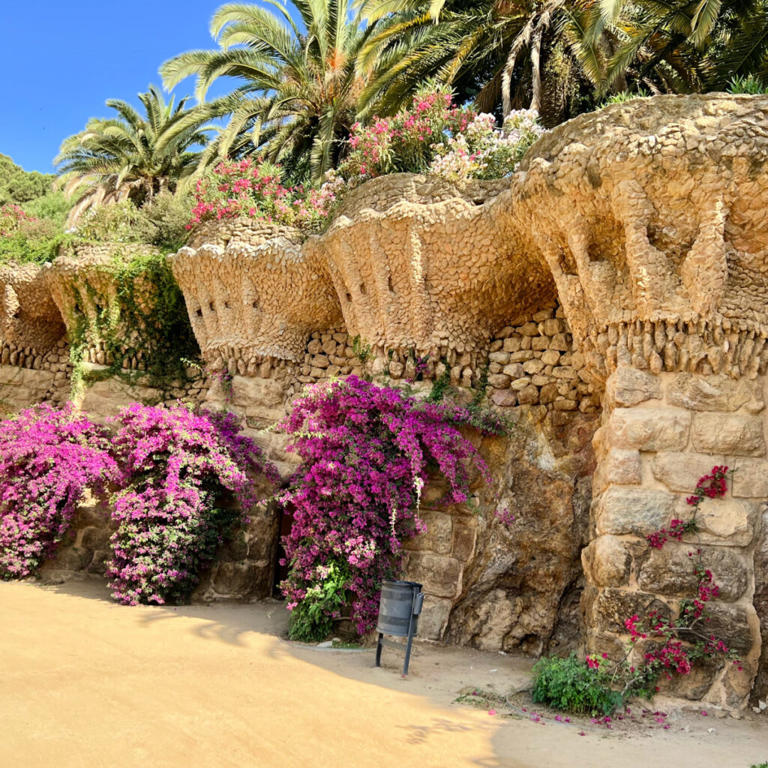
National Geographic content straight to your inbox—sign up for our popular newsletters here
Frites, cockles and cheese—the best things to eat in Hauts-de-France
The sandy bays, marshy rivers and web of canals woven through this region between Paris and Calais offer rich pickings, from crab and samphire to smoked herring, all perfect with the local frites.

As I sit on Calais’ golden beachfront, eating from a bag of deliciously hot frites, it strikes me that it’s a shame so many travellers dash past this northernmost region of France, heading to the south. But those who pause a while will reap great culinary rewards.
Hauts-de-France — stretching from Calais to the edge of Paris — is famed for its excellent frites, sold from mobile trailers and cabins known as friteries. But it’s also replete with seafood, samphire and many other sea vegetables, plus an array of cheese, macarons and Chantilly cream, to name just a few notable specialities.
From Calais, I follow the undulating coastal road north west to Boulogne-sur-Mer. As France’s biggest fishing port, it doesn’t have the bucolic charm of, say, Brittany or Corsica’s fishing villages, but it’s fascinating to see a place that handles over 300,000 tonnes of fish and shellfish a year. Away from the old town, with its immaculately preserved medieval citadel and impressive street art murals, the fishing district is lined with brine-scented warehouses and a vast wholesale market, La Criée, where seagulls caw overhead.

I miss seeing La Criée in full throttle, its busiest time during the early hours when fishing vessels return with their catch. By the time I call in for lunch at Le Chatillon, the area is quiet and the restaurant’s fisherfolk regulars are long gone after their post-shift meal, taken when most people are still eating breakfast. The dining room is decorated like the deck of a ship, complete with porthole-shaped mirrors on the walls. I order turbot, delicate and light and served with the region’s ubiquitous frites, which are both crunchy and indulgently fat and floppy.
At Le Crotoy, 45 miles south along the coast, where the River Somme meets the sea, there’s a different product on the menu. The seaside plant samphire, salicorne in French, grows in abundance on the banks of the river, but so too do other plants that I’ve never heard of before — sea vegetables that are just as tasty. I join local forager Reinette Michon, known as a ‘pecheuse à pied’ as she fishes on foot. She first started learning how to find cockles, worms for bait and various sea vegetables as a child. Now in her sixties, she’s president of the Association of Samphire Collectors, which issues licences to the few dozen people allowed to gather the plant here during the summer months, many selling them, as Reinette does, to restaurants and fishmongers.
Our tour starts from Phare du Hourdel, a lighthouse on the opposite side of the estuary from Le Crotoy. She kits me out with giant wellies from her sand-splattered van and, before long, I’m following her down from the quayside, squelching through the ankle-deep muddy sand and scrambling up the opposite grassy bank as a strong breeze tangles my hair. We’re soon kneeling next to a feathery plant Reinette calls le pompon, which she cuts with her knife and places in a large bucket. “This one’s like samphire,” she says. “It’s lighter and finer, and really nice if you toss it in butter and add to new potatoes.” Next is l’obione, a large, almond-shaped leaf. “This one you can use like you would nori for sushi,” says Reinette. “You dry it in the oven for an hour and it crisps up.”
I ask her how these plants came to be part of the local diet. “The poor have always eaten them, but in the 1960s and 1970s, the Dutch came along the coast to forage, as they were very fond of these plants. The added demand led to the need for licences to ensure the plants were protected,” she says. The final quarry on our foraging mission is sea aster, also known as les oreilles de cochon — pig’s ears. Reinette shows me how to measure the leaves on the palm of my hand — if they fit within it, they’re worth picking, but any longer and they get stringy. She suggests frying them like spinach with crushed garlic, stirring in some creme fraiche and serving them as a side dish, perhaps with a pork chop.
When we return to her van, Reinette hands me a bag full of the foraged plants to cook with later. But before I do that, I get the chance to try them at Auberge de la Marine, where chef Pascal Lefebvre weaves them into his dishes.
A starter of tiny cockles in a light broth topped with crunchy samphire is followed by the Bay of Somme’s flavoursome new potatoes, perfectly seasoned to complement the salt marsh lamb.

Some 45 miles inland, the Somme flows through the city of Amiens, where it weaves its way around a 740-acre patchwork of islands known as Les Hortillonnages. The canals that run between them are popular to navigate on either a guided cruise or in a kayak rented from a waterside outlet. This offers the chance to paddle around the islands at leisure, hopping off here and there to explore their sculpture trails and admire the ‘floating’ gardens, which are at their best in summer.
I make a detour into the city to pick up a box of macarons from chocolatier and confectioner, Jean Trogneux. Made with fine slivers of Valencia almonds, egg whites and almond oil, Amiens macarons are very different to their colourful Parisian counterparts made famous by the likes of Pierre Hermé and Ladurée. Indeed, their dense texture and moistness make them more similar to coconut macaroons, and they’re made to a recipe handed down through six generations of the Trogneux family.
The alluring shop — windows are stacked high with ribbon-wrapped boxes and jewel-like confectionary — sits on the same spot as the original maison, built in 1872 and flattened during the Second World War. Here, I meet current boss, Jean-Baptiste Trogneux. He tells me how macarons first came to France. “We think they were created in Italy, as a byproduct of macaroni, which uses the egg yolk,” he says. “Then, it’s believed that Catherine de Medici brought them to France in the 16th century, and they’ve been adopted in different forms across the country — there must be about 20 different kinds.” When I peel off the macaron’s gold paper and bite into one, I discover they’re sweet but not overly so, and thus a second is impossible to resist.

Another town in the region known for its sweet speciality is Chantilly, a further 90 minutes’ drive inland, closer to Paris. The town’s eponymous whipped and sweetened cream is served atop crepes, apple tarts, chocolate mousses and many other desserts throughout France. It’s thought to have been made famous by 18th-century Italian chef Procopio Cutó, who may have come to the elegant Chateau de Chantilly as a guest chef. Certainly, the area was famous for its Montmorency cherries, which pair perfectly with the cream as a topping. My visit to the chateau, now a sprawling historic estate complete with copious turrets, a moat and museum, finishes at a small hamlet in the grounds, where I’m served a plate of fat raspberries and cream, house-style. Here, they whip their Chantilly using unpasteurised cream, which must be served within hours of being made and has a slight tanginess — the perfect match for the tart raspberries.
Later, in the town, I visit L’Atelier de la Chantilly, where owner Bertrand Alaime teaches visitors how to whip up their own Chantilly cream. With my balloon whisk at the ready, he pours in a carton of 35% fat cream — in British terms, this would be equal parts single and double cream — and soon my arms are getting a good workout. As it starts to thicken, we add in caster and icing sugars and vanilla powder and keep whipping until the whisk can stand up in the bowl on its own. Bertrand then hands me a spoon and I take a mouthful. Silky and rich, it’s better than any Chantilly I’ve ever tasted, so good I wish I could be left to lick every last scrap off the bowl. Better still, he gives me two big pots to take away, which I eat with Mirabelle plums for the next few meals. They're a tangible reminder of the unexpected culinary delights I found across the Hauts-de-France. From frites to fish, samphire to cockles, macarons to cream, there’s every reason to cross the Channel and linger a while.
Related Topics
- FOOD TOURISM
- SHORT TRIPS
You May Also Like

Why Pas de Calais is France's new fine dining destination

In France's highlands, the flowers are tasty and the cheese is stretchy
Nat geo kids back-to-school exclusive offer.
Get up to 4 bonus issues!

Europe's best gourmet getaways

Why Sorrento should be your next Italian gastronomic getaway

6 canal-boating trips in the UK for families

How to plan a food trip through the Ribble Valley, UK

A taste of Belgium, from medieval spices to oral cooking traditions
- Interactive Graphic
- Environment
- Paid Content
History & Culture
- History & Culture
- History Magazine
- The Big Idea
- Mind, Body, Wonder
- Terms of Use
- Privacy Policy
- Your US State Privacy Rights
- Children's Online Privacy Policy
- Interest-Based Ads
- About Nielsen Measurement
- Do Not Sell or Share My Personal Information
- Nat Geo Home
- Attend a Live Event
- Book a Trip
- Inspire Your Kids
- Shop Nat Geo
- Visit the D.C. Museum
- Learn About Our Impact
- Support Our Mission
- Advertise With Us
- Customer Service
- Renew Subscription
- Manage Your Subscription
- Work at Nat Geo
- Sign Up for Our Newsletters
- Contribute to Protect the Planet
Copyright © 1996-2015 National Geographic Society Copyright © 2015-2024 National Geographic Partners, LLC. All rights reserved

IMAGES
COMMENTS
Before I share the best things to do in Valencia, I invite you to grab your copy of the "Mediterranean Cruise Port Guide", the most comprehensive guide to 45 Mediterranean cruise ports (including Valencia), packed with practical information, expert tips & unforgettable experiences! (PDF format/200 pages)
How to get from Valencia cruise port to La Malvarrosa beach. Walk to Tram Stop: Once you're outside the cruise terminal, walk around the bay for 10-15 minutes to a tram stop called " Grau - La Marina ". The walk is 1km (0.6 mile) on flat ground. Catch tram #6 (Direction: Tossal Del Rei) to stop La Cadena.
Valencia Port, also known as the Port of Valencia, is the largest port on the Mediterranean coast of Spain. Situated within the city limits, it serves as a vital economic and cultural hub for the region. The port boasts state-of-the-art infrastructure and facilities, catering to both commercial and cruise ship operations.
The busy port is about 4 km. from the city center. Some cruise lines offer shuttles from the port to the Plaza del Ayuntamiento in the center of Valencia. There are also plenty of taxis. Most ships stay a whole day, but also with a half-day stay you can see a lot. The terminal consists of 2 berths ...
Things to Know Before You Go. Valencia Cruise Port terminal offers ATMs, restrooms, free Wi-Fi, shops, restaurants, and numerous transport links. Pick up a VLC Cruise Card and enjoy reduced-fare shuttle bus transportation between the city and port. A private tour can be a great way to make the most of limited time in this Spanish city.
The park is a beautiful combination of pine forests, rice fields, dune beaches and an expansive lake, all of which you can explore via its marked trails. Port Saplaya is about 10 minutes drive by car from València. Known as 'Little Venice', it is a purpose-built holiday village with an air of romance. Picturesque and quiet, it has two ...
Surprisingly beautiful city. Nice blend of new and old architecture. Visited: Nov 06, 2016. Read full cruise review. 5. Flag. 5. by Cruise1st. The old town of Valencia is lovely, beautiful church, great street Cafe's and open air seating areas, just off the main drag is an open market area for a bit of shopping. 10/10.
Cruise port location. Ships dock in the busy port to the east of the city in an industrial zone about three miles from the city centre. Larger ships may need to use the outside piers, involving a ...
share. Lying on the banks of Turia River, on the eastern coast of Spain, Valencia is one of the major cruise ports in the western Mediterranean Sea. The cruise terminal is located 6 kilometers from the city center, and consists of 5 berths: two of them can accommodate cruise ships less than 300m long, and three of them are mainly used for large ...
One of the most beautiful squares in Valencia is the Plaza de la Reina, or ' Queen's Square' in English, located in the old town. 3. Valencia Cathedral and The Holy Grail. At the end of the 13th century, a white cathedral was built in Valencia. It was dedicated to the Blessed Virgin Mary.
Getting Around in Valencia. On Foot: Whilst the city of Valencia is the 3rd largest in Spain with a population of around 800,000, its historic centre where you'll find most of the city's tourist attractions is relatively small. On arrival from the port you'll be able to see most of the sights of foot. By Bike: A novel way to get around is by bicycle using Valencia's bike sharing scheme ...
Read over 365 detailed Valencia cruise port reviews and find great tips to enjoy Valencia including shore excursions, local activities and must see attractions. Effective July 1st.
The cruise port of Valencia is 4.5 km from the city centre. Taxis will take you wherever you wish to go or bus lines will take you to the city's historic centre or to the Ciudad de las Artes y las Ciencias. If your cruise berths at the docks known as Cruceros 1 or Cruceros 2, there is an internal free shuttle to the Transmediterránea terminal.
Nice blend of new and old architecture. Visited: Nov 06, 2016. Read full cruise review. 5. Flag. 5. by Cruise1st. The old town of Valencia is lovely, beautiful church, great street Cafe's and open air seating areas, just off the main drag is an open market area for a bit of shopping. 10/10. 4.
What to do in Valencia, Spain Cruise Port Valencia, Spain is known for its vibrant culture and stunning architecture. Visitors can explore the city's many historical sites, such as the ancient city walls and the Gothic cathedral. There are also plenty of museums, galleries, and other cultural attractions to explore.
Valencia is a cruise port that offers all the services and attractions of the most sought-after destinations in the Mediterranean, combined with the authentic Mediterranean flavour. Discover the port's present and future facilities and all the attraction of an innovative destination for all types of shipping lines and cruise passengers. QuaysCurrent Cruise Ship DocksPort ...
Bioparc: Valencia's 21st-century version of a zoo is designed to offers its inhabitants -- which include hippos, gorillas, leopards, lions, rhinos and meerkats -- as natural a habitat as possible ...
But for the best tapas in town head to Casa Montaña near the port, founded in 1836, and one of the oldest and most renowned places in Spain. Family run, it's tiny but the food showcases the very finest ingredients, and the wine list is equally special. ... Things To Do In Valencia Cathedral. Valencia's main sight is the 13th century grand ...
Go to Valencia for the Jaw-dropping Attractions. Seeing the mind-boggling City of Arts and Sciences is one of the top reasons to visit Valencia. Valencia is worth visiting for its diverse landmarks. Medieval structures, eclectic museums, vibrant marketplaces, and lush parks all await you in the gorgeous Spanish city.
Valencia is capital of the province of Valencia in Spain's region of Valencia and Murcia. Valencia is Spain's third largest city. It is famous throughout Spain for its nightlife and for its festival, Las Fallas. It also has a lovely old quarter and a new and very impressive new cultural complex, the Ciudad de las Artes y Ciencias, City of Arts ...
From exciting roller coasters to thought-evoking trivia events and robot bartenders capable of crafting unique libations created by you, cruise ships are filled with activities to keep passengers busy. You won't have to worry about being bored, that's for sure! If you're debating whether or not you'd have fun on a cruise, here's a list of 101 of the best things to do! Offerings vary by ship ...
1. Pre- And Post-Cruising Fun In Rome And Vatican City. It takes so long to get to Europe from the United States that I always travel at least a day before the cruise embarks and stay for a few ...
20.) Visit Victory Park. Victory Park (aka Park Pobedy) in Moscow is home to 13 unique memorials, more than 300 pieces of weaponry, the largest flower clock in the world, 13 restaurants, a synagogue, a mosque, and an Orthodox chapel. It's quite an interesting mix worth seeing if your schedule allows.
Things to Know Before You Go. Valencia Cruise Port terminal offers ATMs, restrooms, free Wi-Fi, shops, restaurants, and numerous transport links. Pick up a VLC Cruise Card and enjoy reduced-fare shuttle bus transportation between the city and port. A private tour can be a great way to make the most of limited time in this Spanish city.
Frites, cockles and cheese—the best things to eat in Hauts-de-France. The sandy bays, marshy rivers and web of canals woven through this region between Paris and Calais offer rich pickings, from ...